MEDIEVALIA
A BIBLIOGRAPHY FOR THE STUDY OF THE MIDDLE AGES

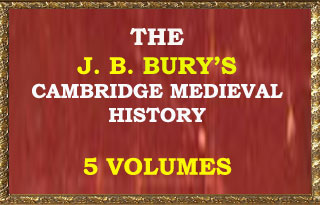
Cristo Raul.org |
Reading Hall The Doors of Wisdom |
MEDIEVAL HISTORY LIBRARY
|
HISTORY OF THE BYZANTINE EMPIRE |
MEDIEVALIAA BIBLIOGRAPHY FOR THE STUDY OF THE MIDDLE AGES |
||
 |
 |
|
MEDIEVAL HISTORY CHRONOLOGICAL TABLE |
|---|
VICTOR DURUY'SHISTORY OF THE MIDDLE AGESBOOK I.
THE GERMANIC INVASION.
BOOK II.
THE ARAB INVASION (622-1058).
BOOK III.
THE CAROLINGIAN EMPIRE, OR THE ATTEMPT TO ORGANIZE
GERMAN AND CHRISTIAN EUROPE (687-814).
BOOK IV.
FALL OF THE CAROLINGIAN EMPIRE.NEW BARBARIAN INVASIONS
(814-887).
BOOK V.
FEUDALISM, OR THE HISTORY OF THE KINGDOMS FORMED FROM
THE CAROLINGIAN EMPIRE, DURING THE TENTH AND ELEVENTH CENTURIES.
BOOK VI.
THE STRUGGLE BETWEEN THE PAPACY AND THE EMPIRE
(1059-1250)
BOOK VII.
THE CRUSADES (1095-1270)
|
 |
 |
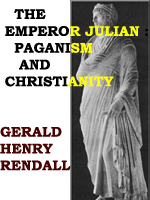 |
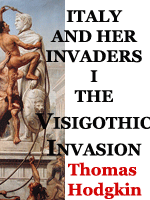 |
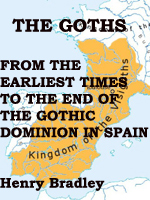 |
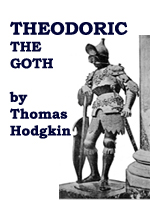 |
 |
 |
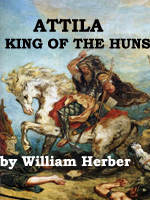 |
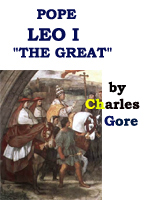 |
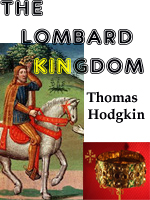 |
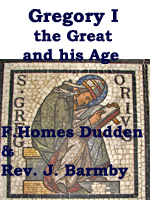 |
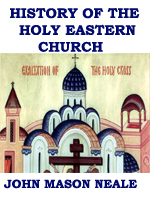 |
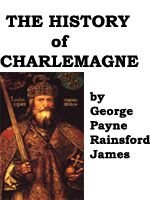 |
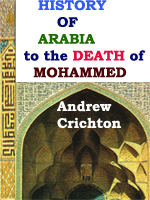 |
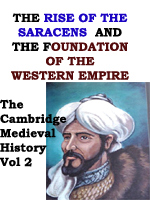 |
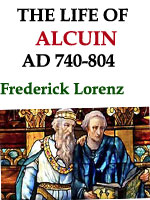 |
 |
 |
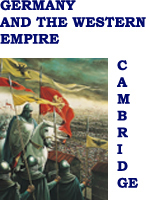 |
|
 |
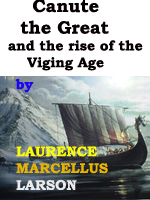 |
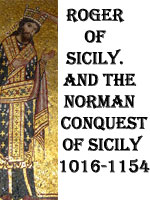 |
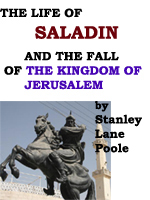 |
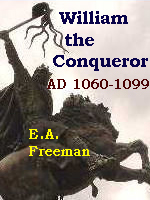 |
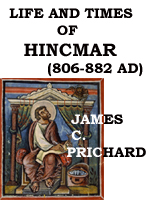 |
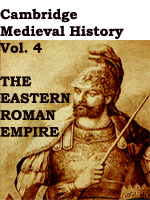 |
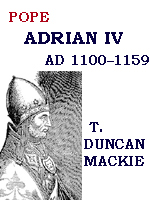 |
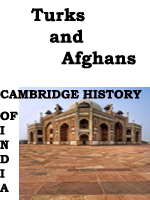 |
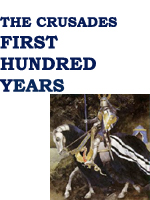 |
 |
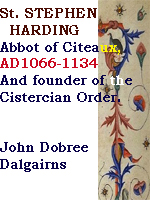 |
 |
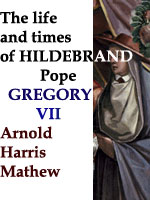 |
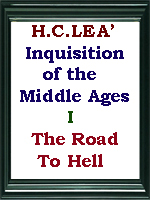 |
 |
 |
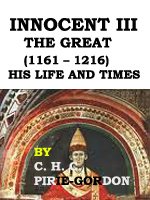 |
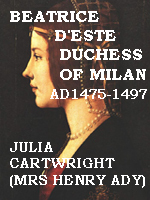 |
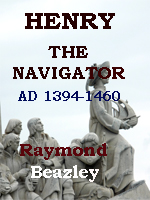 |
|
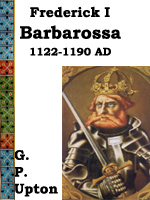 |
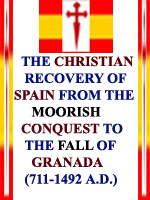 |
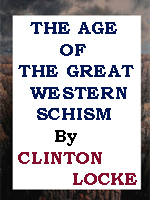 |
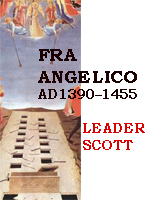 |
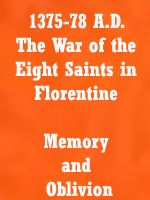 |
 |
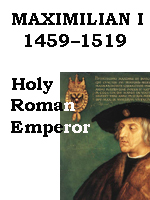 |
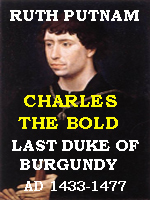 |
 |
HISTORICAL COMPENDIUM OF THE MIDDLE AGES
I
THE BARBARIAN WORLD IN THE FOURTH AND FIFTH CENTURIES
Definition of the Middle Ages. — The term Middle Ages indicates the period which elapsed between the ruin of the
Roman Empire and the establishment of the great modern monarchies. It extends
from the German invasion at the beginning of the fifth century to the capture
of Constantinople by the Ottoman Turks ten centuries later in 1453.
In this period, situated between ancient and modern times, the
cultivation of arts and letters was suspended, although a new and magnificent
architecture was developed. In place of the republics of antiquity and the
monarchies of our day there grew up a special organization called feudalism.
This domination of the feudal lords, the product of many centuries, was finally
overthrown by Louis XI, the Tudors and the princes contemporary with them.
Although there were kings in all countries, the military and ecclesiastical
chiefs were the real sovereigns from the ninth to the twelfth century. The central
power had no force, local powers had no overseer or guide, the frontiers had no
fixed limits. The sovereign and owner parcelled out
the territory into a multitude of petty states where the sentiment of
nationality could not exist. Nevertheless above this condition of many lords
hovered the idea of Christianity represented by the pope, and of a certain
political unity represented by the emperor in comparison with whom all the
kings of Europe were provincial. Thus the great wars of those times were religious
wars, as were the crusades against the Mussulmans of Palestine, the Moors of
Spain, the Albigensian heretics or the pagans of the
Baltic, or were a struggle between the two powers which aspired to rule the
world, a quarrel between Papacy and the Empire. Hence there is a wide difference
between this period and those periods which preceded or followed. Hence of
necessity it has a name and a place apart in universal history.
The Northern Barbarians: their Habits and Religion.— During the military anarchy which drained the last resources of the
Roman Empire, peoples, hitherto concealed in the depths of the north, south and
east, were setting themselves in motion beyond its boundaries, to which they
daily drew nearer. In the north were three layers of humanity, placed at
intervals in the following order: Germans, Slavs and Turanian tribes. On the east were the Persians, a settled and stationary people, who had
often made war on the empire but had no thought of invading it. On the south in
the deserts of their great peninsula were the Arabs, who as yet caused no fear;
and in the wastes of Africa the Moorish populations, who had been touched
rather than permeated by Roman civilization.
At the death of Theodosius (395) there was no serious danger except from
the north. Driven forward by the Asiatic hordes from the banks of the Volga,
the Germans were pressing upon the frontiers of the empire. The Suevi or Suabians, Alemanni and Bavarians were in the south between the Main
and Lake Constance. The Marcomanni, Quadi, Heruli and the great
Gothic nation controlled the left bank of the Danube. In the west along the
Rhine extended the confederation of the Franks, formed as early as the middle
of the third century, and toward the mouth of the Ems, the Frisii,
a remnant of the Batavi. In the north were the
Vandals, Burgundi, Rugii, Longobardi or Lombards; between the Elbe and the Eyder, the Angles and Saxons; farther north, the
Scandinavians, Jutes and Danes in Sweden and Denmark, whence they emerged to
join the second invasion; and lastly in the immense plains of the east and at
many points of the Danubian valley, the Slavs, who
were to follow the Germanic invasion but only to enter into history later on,
first through the Poles and then through the Russians.
A spirit totally different from that of the inhabitants of the Roman
Empire animated these barbarians. Among them reigned the love of individual
independence, the devotion of the warrior to his chieftain and a passion for
wars of adventure. As soon as the young man had received in the public assembly
his buckler and lance, he was a warrior and a citizen. He immediately attached
himself to some famous chieftain, whom he followed to battle with other
warriors, his leudes or henchmen, always ready to die in his behalf. The government of the Germans
was simple. The affairs of the tribe were administered in an assembly in which
all took part. The warriors gathered there together in arms. The clash of
shields denoted applause; a violent murmur, disapproval. The same assembly exercised
judicial power. Each canton had its magistrate, the graf, and the whole nation had a konig, or king,
elected from among the members of one special family which held hereditary
possession of that title. For combat the warriors chose the leader, or herzog, whom they
wished to follow.
The Olympus or heaven of these peoples presented a mixture of terrible
and graceful conceptions. At the side of Odin, who gave victory and who by
night rode through the air with the dead warriors; of Donar,
the Hercules of the Germans; and of the fierce joys of Walhalla,—appeared the
goddesses Freja and Holda,
the Venus and the Diana of the north, who everywhere diffused peace and the
arts. The Germans also adored Herta, the earth, Sunna, the sun, and her brother Mani, the moon, who was
pursued by two wolves. The bards were their poets and encouraged them to brave
death. It was their glory to die with a laugh.
The Germans cultivated the soil but little. They possessed no domain as
private property, and every year the magistrates distributed to each village
and each family the plot which they were to cultivate. They had no towns lout
scattered earthen huts far distant from each other, each surrounded by the plot
which the proprietor cultivated. Their habits were tolerably pure. Polygamy was
authorized only for the kings and the nobles. But drunkenness and bloody
quarrels generally terminated their Homeric feasts, and they had a passion for
gambling.
Arrival of the Huns in Europe.— Behind this Germanic family which was destined to occupy the greater part of
the empire, pressed two other barbarous races: the Slavs whose turn did not
come until later, and the Huns who were an object of fear to the people of the
west. Their lives were passed in enormous chariots or in the saddle. Their bony
faces, pierced with little eyes, their broad flat noses, their enormous widespread
ears and swarthy tattooed skins made them seem hardly human. At the end of the
fourth century they had convulsed the whole barbaric world and precipitated the
Germans upon the Empire of the West. In consequence of intestine discords a
part of the nation of the Huns, driven on toward Europe, crossed the Volga,
carrying with them the Alani. They dashed themselves
against the great Gothic empire in which Hermanric had united the three
branches of the nation: the Ostrogoths or Oriental Goths east of the Dnieper;
the Visigoths or western Goths; the Gepidae or
Laggards farther to the north. The Ostrogoths submitted. The Visigoths fled
toward the Danube and obtained from the Emperor Valens an asylum on the lands
of the empire. They revolted soon after against their benefactor and slew him
at the battle of Adrianople (378). But they were arrested by Theodosius who
established many of them in Thrace, where at first they faithfully defended that
frontier against the Huns.
Invasion of the Visigoths. Alaric. The Great Invasion of 406. — When at the death of Theodosius his two sons divided their heritage
(395), Honorius received the West. His provinces bore the full brunt of the
invasion from the north. In the course of half a century this empire endured
the four terrible assaults of Alaric, Radagaisus,
Genseric and Attila. Hardly had it fallen, when the Franks of Clovis wrested
the finest portion from its invaders, which they still retain. The Visigoths
under the lead of their king Alaric first tried their forces against the Empire
of the East. They ravaged Thrace and Macedonia, passed Thermopylae where there
was no longer a Leonidas, devastated Attica, but respected Athens, and
penetrated into the Peloponnesus. The Vandal Stilicho, general of Honorius,
surrounded them on Mount Pholoe, but they escaped.
Arcadius, who reigned at Constantinople, only rid himself of their dangerous
presence by pointing out the Empire of the West. They hastened thither, but
found at Pollentia in Liguria (403) the same
Stilicho, who defeated them and forced them to evacuate Italy. Honorius, to
celebrate this victory of his lieutenant, enjoyed a triumph at Rome and offered
the people the last sanguinary games of the circus. Then he hid himself at
Ravenna behind the marshes at the south of the Po, disdaining his ancient
capital, and no longer daring to reside in Milan where Alaric had nearly
surprised him.
The ostensible consent of the empire had admitted upon its territory the
Visigoths, who rewarded it badly. But now four peoples, the Suevi, Alani, Vandals and Burgundians,
at two points forced their way across the frontier. One of their divisions
passed the Alps under Radagaisus, but was annihilated
at Fiesole by Stilicho. Another crossed the Rhine (406) and for two years laid
waste the whole of Gaul. Afterward the Burgundians founded on the banks of the Rhone a kingdom which Honorius recognized in 413,
and the Alani, the Suevi and the Vandals proceeded to inundate Spain. The great invasion had begun.
Capture of Rome by Alaric (410). Kingdoms of the Visigoths, Suevi and Vandals. — But Alaric returned to the charge. No longer was he confronted by Stilicho,
who had been sacrificed to the jealousy of Honorius. He captured Rome,
delivered it over to the fury of his barbarians who respected the Christian
churches, and died some time later in Calabria at Cosenza (410). The Visigoths
hollowed out a tomb for him in the bed of a river whose waters had been diverted,
and then restored the natural course of the stream after having slain the prisoners
who had done the work.
The power of the Visigoths did not expire with Alaric. Notwithstanding
their sack of Rome this people, who had been so long in contact with the empire,
were specially disposed to yield to the paramount influence of Roman civilization. Ataulf, the brother-in-law of Alaric, and after him Wallia, entered the service of Honorius. In his interest
they rescued Gaul from three usurpers who had there assumed the purple, and
Spain from the three barbarian tribes which had invaded it. For his reward Wallia obtained a portion of Aquitania, and founded the
kingdom of the Visigoths (419) which was to cross the Alps. During the same
year Hermanric organized with the remnants of the Suevi a kingdom in the mountains of the Asturias. A little later the Vandals, who had
been crowded into the south of Spain, crossed into Africa, which was opened to
them by the treachery of Count Boniface. They captured Hippo despite its long
resistance, which the exhortations of the Bishop Saint Augustine sustained, and
forced the Emperor Valentinian to recognize their occupancy (435). Genseric who
made this conquest also seized Carthage (439), founded a maritime power on
those shores which had formerly acknowledged the Carthaginian sway, and until
his death (477) ravaged all the coasts of the Mediterranean with his ships. In
453 he captured Rome and for the space of fourteen days gave it over to
pillage.
Attila. — Four barbaric kingdoms
had already risen in the West when Attila made his appearance. This is the
great episode in the invasion of the fifth century. What would have become of
Europe under the Tartar domination of Attila, the scourge of God, who wished
the grass not to grow where his horse's hoof had fallen! Having put to death
his brother Bleda, he reigned alone over the nation of the Huns, and held under
his yoke all the peoples established on the banks of the Danube. He inhabited a
wooden palace in a city in the plains of Pannonia, whence he had dictated laws
and imposed tribute on Theodosius II, emperor of the East. When Genseric
invited him to create a diversion favorable to his own designs he poured upon
the West the immense hosts of his peoples. He traversed northeastern Gaul,
overthrowing everything in his path, and laid siege to Orleans. The patrician
Aetius hastened thither with a mixed army, in which Visigoths, Burgundians, Franks and Saxons fought beside the Romans
against the new invaders. The decisive battle of Chalons (451) drove Attila to the other side of the Rhine. He retreated toward Italy.
There he destroyed many cities, and among others Aquileia, whose inhabitants
escaped to the lagoons of the Adriatic where they laid the foundations of
Venice. On his return to Pannonia he died of apoplexy (453) and the great power
of the Huns wasted away in the quarrels of his sons.
The Western emperors were hardly more than playthings in the hands of
the barbarian chiefs who commanded their troops. One of them, the Herule Odoacer, ended this death agony by assuming the
title of king of Italy (476). Thus fell the great name of the Western Empire,
an event more important in subsequent than in contemporary eyes, which had been
accustomed through more than half a century to see the barbarian masters dispose
of everything. Nevertheless a remnant of the empire still existed under the
patrician Syagrius at the center of Gaul, between the
Loire and the Somme. Ten years later that too disappeared before the sword of
the Franks.
II
PRINCIPAL
BARBARIAN KINGDOMS. THE EASTERN EMPIRE
Barbarian Kingdoms of Gaul, Spain and Africa. — We have just seen how from the Loire to the Strait of Gibraltar
Alaric and his successors founded the kingdom of the Visigoths in Gaul and
Spain, how Genseric built that of the Vandals in Africa, and lastly how Attila
ravaged everything but constructed nothing. Other barbarian dominations
established were those of the Burgundians, the Suevi, the Anglo-Saxons, the Ostrogoths and the Lombards
which speedily passed away.
The Burgundian kingdom, established in 413 in the valleys of the Saone
and Rhone with Geneva and Vienne for its principal cities, had eight kings of
little distinction. Clovis rendered it tributary in 500 and his sons conquered
it in 534.
The kingdom of the Suevi, born at the same
time, expired a few years later. In 409 this people invaded Spain and seized
the northwest region or Galicia. Under its kings Rechila and Rechiarius it seemed about to conquer the whole
of Spain, but the Goths arrested its growth and reduced it to subjection (585).
Saxon Kingdoms in England. — Britain, separated from the continent by the sea, had her invasion apart.
Under the Romans three distinct peoples existed there. These were: in the
north, in the Scotland of today, the Caledonians or Picts and Scots whom the emperors had been unable to subdue; in the east and south,
the Loegrians who were affected by Roman
civilization; on the west, beyond the Severn, the Cambrians or Welsh who seemed
invincible in their mountains. Abandoned by the legions (428) and left
defenseless to the incursions of the Picts, the Loegrians (455) entreated assistance from the Saxons, Jutes
and Angles, who were incessantly setting out from their German and Scandinavian
shores to plough the seas. Two Saxon chiefs, Hengist and Horsa, routed the Picts and received in payment the isle of Thanet on the
coast of Kent. But Hengist, despoiling those who had
summoned him, took possession of the country from the Thames to the Channel and
assumed the title of king of Kent (455). Thenceforth the ambition of all these
pirates was to conquer a settlement in Britain. The kingdom of Sussex or South
Saxons was founded in 491; that of Wessex or West
Saxons in 516; and that of Essex or East Saxons in 526. In 547 began the invasion
of the Angles, who founded the kingdoms of Northumberland or the kingdom north
of the Humber; on the eastern British coast, of East Anglia (577) and Mercia
(584). These three kingdoms of the Angles being reckoned with the four Saxon
kingdoms, there were in Britain seven little monarchies or the Anglo-Saxon
Heptarchy which later on formed a single state. The Saxons formed the basis of
the present population of the country and to them England owes her language.
Kingdom of the Ostrogoths in Italy. Theodoric (489-526).— The conquest of Italy by the Ostrogoths took place later and nearly
coincided with the conquest of Gaul by the Franks. Emancipated from the yoke of
the Huns by the death of Attila, the Ostrogoths in 475 had taken as their chief
Theodoric, the son of one of their princes, who had been reared as a hostage at
Constantinople. At the invitation of Zeno, emperor of the East, Theodoric
conquered Italy from the Heruli (439-493), and showed
himself the most truly great of the barbarian sovereigns prior to Charlemagne.
To his kingdom of Italy by skillful negotiations he added Illyricum, Pannonia,
Noricum and Rhaetia. A war against the Burgundians gave him the province of Marseilles and he routed a Frankish army near Arles in
507. The Bavarians paid him tribute. The Alemanni appealed to him for aid against Clovis. Finally at the death of Alaric II he
became the guardian of his grandson Amalric and
reigned in fact over the two great branches of the Gothic nation, whose
possessions touched each other toward the Rhone and who occupied the shores of
the Mediterranean in Spain, Gaul and Italy. Family alliances united him to almost
all the barbarian kings.
He made an admirable use of peace. The newcomers needed land. Each city
gave up one-third of its territory for distribution to the Goths. This
preliminary assignment once made, a common law was established for the two peoples,
though the Goths retained some of their peculiar customs. In other respects he
aimed at separating the vanquished from the victors, reserving arms for the
barbarians and civil dignities for the Romans. He possessed a great veneration
for ancient imperial institutions. He consulted the senate of Rome and
maintained the municipal system of government, himself appointing the decurions. Thus a barbarian restored to Italy a prosperity
which she had lost under her emperors. The public edifices, aqueducts, theatres
and baths were repaired, palaces and churches were built and the waste lands
were cultivated. Companies were formed to drain the Pontine Marshes and those
of Spoleto. The population increased. Theodoric, who did not know how to write,
gathered around him the finest literary geniuses of the time, Cassiodorus,
Boethius and Bishop Ennodius. Himself an Arian, he
respected the Catholics and confirmed the immunities of the churches. Yet the
close of his reign was saddened by threats of persecution in reprisal for what
the Eastern emperor was inflicting on the Arians, and by the torture of
Boethius and of the prefect Symmachus, unjustly
accused of conspiracy. He died in 526 and his kingdom survived him only a few
years. Thus too passed rapidly away the Vandals and the Heruli,
the Suevi and the Burgundians,
the western and eastern Goths. They all formed part of the barbarian guard
which first entered the empire. Roman society, incapable of defending itself,
seems to have been strong enough to communicate to those who came in contact
with it that death which it bore in its own breast.
Revival of the Eastern Empire. Justinian (527-565).— The ruined Empire of the West had been replaced by thirteen Germanic
kingdoms; those of the Burgundians, Visigoths, Suevi, Vandals, Franks, Ostrogoths and of the seven
Anglo-Saxon states. The Greek Empire alone had escaped invasion and remained
erect in spite of its religious discords and the general weakness of its
government. The reign of Theodosius II, the longest which the fifth century
presents (418-450), was really that of Pulcheria, the
sister of the incapable emperor. It was signalized by the publication of the Theodosian Code. Under Zeno and Anastasius Constantinople
was racked by quarrels and riots on questions of religion.
Justinian restored vigor and brilliancy to this empire. He preserved
intact the eastern frontier and forced the Persians to conclude in 562, after
thirty-four years of war, an honorable treaty. He repulsed (559) an invasion of
Bulgarians which threatened Constantinople. In the west he destroyed the
kingdom of the Vandals by the victories of Belisarius and that of the
Ostrogoths by the successes of the eunuch Narses. While his generals were
winning battles, his lawyers were drawing up the Code, the Digest or Pandects,
the Institutes and the Novellae, which have
transmitted to posterity the substance of ancient jurisprudence. This reign was
the glorious protest of the Eastern Empire and of civilization against invasion
and barbarism. The splendor was of brief continuance. In 568 Italy was lost.
Conquered by the Lombards, a fourteenth Germanic kingdom was founded, which
lasted more than 200 years and was to fall under the blows of Charlemagne. From
her geographic position Constantinople could not be the heir of Rome. The
inheritance of the Western Empire was to belong to the Germanic race.
As for the Eastern Empire, after that brilliant period it passed many
gloomy days despite the talent of princes like Maurice and Heraclius. Thanks to
her strategic situation Constantinople, the daughter of aged Rome, who bore on
her brow from her very birth the wrinkles of her mother, alone remained
standing like an isolated rock. For ten centuries she braved victoriously the
assaults of the Mussulmans in the south and of the Slavic and Turanian tribes on the north.
III
CLOVIS
AND THE MEROVINGIANS
(481-753)
The Franks. — In the third century
before Christ the Germans had formed on the right bank of the Rhine two
confederations: on the south, that of the Suevic tribes, who called themselves the Alemanni or men; on
the north, that of the Salii, the Sicambri,
the Bructeri, the Cherusci and the Catti, who took the name of Franks or the
brave. They are first mentioned by Roman writers in 241 when Aurelian, then
legionary tribune, defeated a body of Franks on the lower Rhine. Probus recaptured from them the Gallic cities which they
had attacked on the death of Aurelian, and transported a colony of them to the
Black Sea (277). A little later others crossed the Rhine, devastated Belgium
and received from Julian authority to establish themselves on the banks of the
Meuse which they had ravaged. Several of the Frankish chiefs rose to high
positions in the empire. Thus Arbogast was the prime
minister of Valentinian II and disposed of the purple.
Twelve years after his death the Franks, already established in northern
Gaul, tried to arrest the great invasion of 406. Failing in this they wished to
obtain their share of these provinces which the emperor himself was abandoning,
and their tribes advanced into the interior of the country, each one under its
own chieftain or king. At that time there were Frankish kings at Cologne, Tournay, Cambrai and Thérouanne.
Of these kings, Clodion, chief of the Salian Franks of the country of Tongres or Limburg, is the first whose existence has been well authenticated. Pharamond, his reputed predecessor, is mentioned only in
later chronicles. He captured Tournay and Cambrai, put to death all the Romans whom he found and
advanced toward the Somme which he crossed; but in the neighborhood of Sens was vanquished by the Roman general Aetius (448).
He did not survive his defeat. Merovig his
kinsman succeeded. He joined three years later with all the barbarians
quartered in Gaul and with the rest of the Romans in resisting the Huns. The
battle of Châlons (451) against Attila cost the lives, it is said, of 300,000
men and rescued the barbarian nations encamped between the Rhine and the
Pyrenees.
Childeric,
the son of Merovig, was expelled by the Franks who
were disgusted at his excesses. He was replaced by the Roman general Aegidius. Recalled at the end of eight years, he reigned
over the Franks until his death and was interred in Tournay,
where his tomb was discovered in 1633. His son Chlodowig or Clovis was the real founder of the Frankish monarchy.
Clovis. — In 481 Clovis
possessed only a few districts of Belgium with the title of king of the Salian Franks, who had settled in the neighborhood of Tournay. He commanded 4000 or 5000 warriors. Five years
later he defeated near Soissons Syagrius, the son of Aegidius, who governed in the name of the empire the
country between the Somme and the Loire. He forced the Visigoths among whom the
vanquished general had taken refuge to give him up, put him to death and
subdued the country as far as the Loire.
In 493 he married Clotilde, daughter of a
Burgundian king, herself an Orthodox Christian. This union had the happiest
results for Clotilde soon converted her husband. As
all the barbarians established in Gaul were Arians and hence in orthodox eyes
equivalent to heretics, Clovis became the hope of the orthodox Gauls. Even
before his conversion, Amiens, Beauvais, Paris and Rouen had opened their
gates, thanks to the influence of their bishops. The Alemanni having crossed the Rhine, Clovis marched against them. He was on the point of
being vanquished, when he invoked the God of Clotilde.
Success seemed granted to his prayer, and the Alemanni were thrust back beyond that river and pursued into Suabia.
On his return Clovis was baptized with 3000 of his men by Saint Remi, archbishop of Reims. As the archbishop sprinkled the
holy water on the head of the neophyte he said to him, “Bow thy head, softened Sicambrian. Adore what thou hast burned; burn what thou
hast adored”. An Arian sister of Clovis was baptized at the same time (496).
The Gallo-Roman inhabitants, oppressed by the Arian Burgundians and Visigoths, thenceforth centred their affections
and hopes in the converted chieftain of the Franks. All the episcopate was on
his side. “When thou tightest”, wrote to him Avitus, bishop of Vienne, “we
share the victory”. So they aided him in all his enterprises. Some of his
liegemen deserted, but his successes and above all the booty they could gain
under so skillful a leader brought them back.
The country between the Loire and the Somme was subjugated and Armoricum won over to his alliance. Then he attacked the Burgundians (500), defeated their king Gundobad and made him pay tribute. Then one day he said to his soldiers, “It causes me
great grief that those Arian Visigoths possess a part of this Gaul. Let us
march with the help of God and after vanquishing them let us reduce their
country to our power”. The army crossed the Loire, by the express order of the
king religiously respecting on its passage all the property of the churches.
The Visigothic king Alaric II was beaten and slain at Vouillé near Poitiers. That city, Saintes, Bordeaux,
Toulouse, opened their gates and Septimania with
Nimes, Beziers and Narbonne would have been conquered if Theodoric, the great
head of the Ostrogoths, had not sent succor to his brethren of the West. On his
return from this expedition Clovis found the ambassadors of the Emperor
Anastasius who brought him the titles of consul and patrician with the purple
tunic and robe. His last years were bloody. He slew Sigebert and Chloderic kings of Cologne, Chararic another petty Frankish king, Ragnachairus king of Cambrai, and Benomer king of the
Mans, that he might seize their kingdoms and treasures. He died in 511 and was
interred in the basilica of the Holy Apostles or Saint Genevieve which he
himself had built. His reign had lasted thirty years, and his life forty-five.
At his death the state which he founded comprised all Gaul except Gascogne where no Frankish troop had made its appearance,
and Brittany which was controlled by counts or military chiefs. The Alemanni in Alsace and Suabia were associates in the fortunes of the Franks rather than subject to the authority
of their king. The Burgundians after paying tribute
for a time fully intended to refuse it in future and the cities of Aquitaine,
feebly restrained by Frankish garrisons at Bordeaux and Saintes,
remained almost independent.
As to the victorious nation united only for conquest and pillage it had
contented itself with expelling the Visigoths from Aquitaine without replacing
them. The war ended the Franks had returned with their booty to their former
abodes between the Rhine and the Loire. Clovis himself had settled at Paris, a
central position between the two rivers, whence he could more easily watch the
provinces and his enemies.
The Sons of Clovis (511-561).—The
four sons of Clovis shared his territories and followers, so that each one had
a nearly equal portion of the land to the north of the Loire where the Prankish
nation had settled, and also a part of the Roman cities of Aquitaine which paid
rich tributes. Childebert was king of Paris; Clotaire,
king of Soissons; Clodimir, king of Orleans; Thierry,
king of Metz or Austrasia.
The impulse imparted by Clovis lasted for some time. His sons carried
their arms to Thuringia, Burgundy, Italy and Spain. The Alemanni and the Bavarians had recognized them as suzerains, and the Saxons paid them
tribute.
Fredegonde and Brunehaut.— Clotaire, one of the sons of Clovis, had reunited
his father's kingdom in 558, but upon his death three years afterward the
Frankish monarchy became again a tetrarchy by the partition of its states among
his four sons: Caribert, king of Paris; Gontram, of Orleans and Burgundy; Sigebert,
of Austrasia, and Chilperic, of Soissons. From that
time rivalry began, destined to increase between the eastern Franks or Austrasians and the western Franks or Neustrians.
The former were more faithful to the rude manners of Germany of which they were
the neighbors. The latter were more accessible to the influence of that Roman
civilization in the midst of which they had settled.
This opposition finds its first expression in the hatred of two women. Sigebert had married Brunehaut,
the daughter of Athanagild king of the Visigoths, beautiful, learned and
ambitious. Chilperic, desirous also of a royal wife,
obtained the hand of Galswinthe, the sister of Brunehaut. Soon however he returned to his imperious
concubine Fredegonde, who caused her rival to be
strangled and took her place. Brunehaut burning to
avenge her sister stirred up Sigebert to attack
Neustria. Her husband, victorious, was about to proclaim himself king of the Neustrians, when two servants of Fredegonde,
“bewitched by her”, stabbed him at the same time in the side with poisoned
knives (575). As his son Childebert II was still a minor, the Austrians were
governed by a mayor of the palace. That official was originally a mere steward
of the king's household, chosen from among his vassals. Supported by other
vassals, the mayors of the palace were to acquire an important influence to the
advantage of the barbarous aristocracy, already very hostile to royalty, and
were to hold the feeble kings in tutelage until the moment came when they could
take their place.
The years that followed are confused and bloody, filled with the
turbulence of the leudes or liegemen, and above all with the fierce struggle between Brunehaut and Fredegonde. The former in the name of her
children and grandchildren seized the power in both Australia and Burgundy. Her
stern and orderly rule alienated her subjects, who proposed to Clotaire II, the son of Chilperic and Fredegonde, to make him their king if he would
rid them of Brunehaut. Abandoned by her troops, she and
her four grandsons were captured by Clotaire. He cut
the throats of the young princes and had the aged queen fastened to the tail of
a wild horse (613) which dashed her body to pieces.
Clotaire II (584) and Dagobert (628). —Clotaire II for the third time established
the unity of the Frankish monarchy. Under his reign seventy-nine bishops and
many laymen took part in the Council of Paris, which promulgated a so-called
perpetual constitution whereby the power of the ecclesiastical and secular
aristocracy was greatly increased. The taxes imposed were abolished, the fiefs
granted were declared inalienable and the ecclesiastical jurisdiction was
extended.
The reign of Dagobert was the most brilliant
of the Merovingian line and gave to the Franks preponderance in Western Europe.
He stopped the incursions of the Venedi over whom a
Frankish merchant had become king, opposed the incursions of the Slavonians into Thuringia and delivered Bavaria from a
Bulgarian invasion. In Gaul he compelled the submission of the Vascons and the alliance of the Bretons whose chief had
assumed the title of king. He chose clever ministers and Avon a legitimate popularity
by travelling about his kingdom to administer justice in behalf of the small as
the great. He revised the laws of the Salii, the Riparii, the Alemanni and the
Bavarians, encouraged commerce and industry and built the Abbey of Saint Denis.
The Sluggard Kings. The Mayors of the Palace (638-687). — But Dagobert carried the power of the Merovingians with him to the tomb. After him came the
sluggard kings. Nevertheless royalty found a formidable champion in Ebroin, mayor of the palace in Neustria, who with increased
energy resumed the struggle of Brunehaut and Dagobert against the leudes and
their chief, Saint Leger, bishop of Autun. In a
document he wrote, “Those men have apparently forfeited their fiefs who are
convicted of infidelity to those from whom they hold them”. Many vassals who
seemed too independent were put to death, deprived of their property or
banished. The Austrasian vassals made common cause
with the exiles. They deposed their Merovingian king and confided the power to
the two mayors, Martin and Pepin d'Heristal, with the
title of princes of the Franks. After the death of Ebroin they gained the battle of Testry and all Neustria in
consequence (687). From that day forth Pepin d'Heristal reigned in reality though without assuming the
title of king. His successors were to erect the Frankish Empire in which all
the Germanic invasion is summed up.
IV
MOHAMMED
AND THE ARAB INVASION
Arabia. Mohammed and the Koran. — After the German invasion which came from the north followed the Arab
invasion from the south. Arabia, whose peoples then appeared for the first time
on the scene of history, is a vast peninsula covering more than a million
square miles. Northward it opens upon Asia through extensive deserts and is
attached on the northwest to Africa by the Isthmus of Suez. Elsewhere it is
surrounded by the Red Sea, the Strait of Bab-el-Mandeb, the Indian Ocean, the
Strait of Ormus and the Persian Gulf. The ancients,
who had small acquaintance with it, divided it into three parts: Arabia Petraea or the peninsula of Sinai; Arabia Deserta or Nedjed, comprising the
deserts which extend from the Red Sea to the Euphrates; and Arabia Felix or
Yemen. Its religion was a mixture of Christianity, introduced by the
Abyssinians and Greeks; of Sabeism, taught by the
Persians; of Judaism, which had filtered in everywhere in the track of the
Jews; and above all of idolatry. The temple of the Kaaba in the holy city of Mecca contained 360 idols, the custody of which was entrusted
to the illustrious family of the Korei'sh. There was
much religious indifference in the presence of so many faiths. The masses of
population were kept together by the poets, who were already developing the
language of Islam in those poetical tournaments, wherein the idea of Allah, the
Supreme Being, a belief natural to such a country, frequently occurs.
Mohammed was born of Koreish parents in 570.
Early an orphan and without fortune, he became a camel-driver and travelled in
Syria where he became intimate with a monk of Bostra.
His integrity and intelligence won the hand of a rich widow named Khadijah. Thenceforth he could give himself up to his
meditations. At the age of forty his ideas were fixed.
To Khadijah, to his cousin Ali, to his
freedman Sei'd and to his friend Abou-Bekr he disclosed his purpose of restoring to the religion of Abraham its primitive
purity. He told them that he was receiving from God through the Angel Gabriel
the verses of a book which was to be the book of all others, or the Koran. He
designated his new religion as Islam or entire resignation to the divine will.
His hearers believed in him and Abou-Bekr won over
Othman and the fiery Omar to the new faith. The proselytes increased daily.
Persecuted by the Korei'sh, he fled to Yatreb (622). With the year of the Hegira or Plight the
Mussulman era begins.
Yatreb now became Medinat-al-Nabi, the city of the
Prophet, commonly called Medina. At the battle of Bedr 300 of his followers defeated 1000 Koreish (624).
Afterwards he was worsted at Mount Ohud, but gained a
decisive advantage in the War of the Nations or of the Trench. Finally he
reentered Mecca (630) where he destroyed all the idols, saying: “The truth has
come. Let the falsehood disappear!”. From that moment he was the religious
leader of Arabia. He wrote threatening letters to Chosroes, king of Persia, and
to Heraclius, emperor of the East, and was on the point of undertaking a holy
war against them when he died (632).
The Koran is the collection of all the revelations which according to
the occasion fell from the mouth of the Prophet, and which were collected in a
first edition by the orders of the Caliph Abou-Bekr,
and in a second by those of the Caliph Othman. Composed of one hundred and
fourteen chapters or surates subdivided into verses,
it contains both the religious and civil law of the Mussulmans. The basis of
its dogma is fully summed up in these words, “There is no God but God, and
Mohammed is the prophet of God”. In Allah, the sole and jealous God, the Koran
admits no plurality of persons and it places no inferior divinity beside him.
It rejects all idea of God made man; but it teaches that God has revealed
himself by a series of prophets, of whom Mohammed is the last and the most
complete. Those who preceded him are: Adam, Noah, Abraham, Moses and Christ,
with whom God communicated through angels, his messengers. Mohammed
acknowledged that Christ possessed the gift of miracles which he himself had
not. He preached the immortality of the soul, the resurrection of the body and
its participation in the joys or sufferings of a future life. A delightful but
sensual paradise was in store for the good, a burning hell for the bad.
Nevertheless in this paradise which appealed to the vulgar crowd there are also
spiritual joys. “The most favored of God will be he who shall behold his face
evening and morning, a felicity which will surpass all the pleasures of the
senses as the ocean surpasses a drop of dew”.
He elevated the condition of Arab women. “A son”, he said, “wins
paradise at the feet of his mother”. Before his day the daughters inherited
nothing. He assigned to them one-half the portion of their brothers. While
enforcing the authority of the husband, he bade him be a tender protector to
his wife. Though he tolerated polygamy so as not to shock Eastern customs, he
allowed a man only four legitimate wives, and advised that as a praiseworthy
act a man should confine himself to one. The Koran prescribes severe penalties
for theft, usury, fraud and false witness and enjoins alms. It minutely
regulates the ritual of worship; the fast of Ramadan; the observance of the
four sacred months, an ancient custom which like the truce of God suspended
hostilities among the faithful; the great annual pilgrimage to Mecca where
Mohammed had installed the seat of this new religion; the five daily prayers;
the absolutions, either with water or sand; circumcision; abstinence from wine
and many other detailed observances. Nevertheless so far as Christians and Jews
were concerned, it is sufficient not to ally oneself with them by blood and one
must not fight against them unless they give provocation. As for other people,
it is the duty of every good Mussulman to attack, pursue and slay them if they
do not embrace the religion of the Prophet.
These doctrines, these hopes and these threats were powerful springs of
action which launched the Arabs, sword in hand, in every direction.
The Caliphate. The Sunnites and Shiites. Arab Conquests. (637-661). — Mohammed did not designate his successor, but Abou-Bekr,
whom he had charged with pronouncing the formal prayer in his place, was recognized
as caliph or religious, civil, and military chief (632). Abou-Bekr in turn designated Omar (634) and after Omar, Othman was elected (644), who was
succeeded by Ali. The latter was the husband of Fatima, daughter of the Prophet,
and chief of the Fatimite party which gave birth to
the great Mussulman sect of the Shiites or Separatists. They regard Ali as
having been unjustly excluded from the succession after the death of Mohammed.
The Sunnites, or followers of tradition, recognize Abou-Bekr,
Omar and Othman as legitimate. After Ali the hereditary system begins with the Ommiades (661).
This period is that of the great conquests. Khaled and Amrou by the victories of Aiznadin and the Yermouk wrested Syria from Heraclius, emperor
of the East, who had just returned victorious from expeditions against Persia.
In ten years’ time the conquest of Persia was assured by the victories of Kadesiah, Jalula and Nehavend. Yezdegerd, the last of the Sassanides,
in vain besought succor from the emperor of China. In 639 Amrou entered Egypt and made himself master of the country after besieging Alexandria
fourteen months.
The Ommiades. — The usurpation of Moaviah, chief of the Ommiades, who rendered the government a despotism and made
Damascus his capital, was followed by civil dissensions. Blood flowed in
streams for thirty years. The almost suspended movement of conquest began again
about 691 under Abd-el-Malek.
In the east, Transoxiana and Sogdiana were conquered and India was threatened. Though in the north Constantinople
successfully resisted a seven years’ siege (672-679), the Arab power was
established in the west along the entire northern coast of Africa. Kairowan was founded, Carthage. captured, a revolt of the
Moors stifled and the Columns of Hercules passed by Tarik who gave them his
name as the mountain of Tarik or Gibraltar. The Spanish Visigothic kingdom,
weakened by ecclesiastical influence and given up to discord by its elective
system of monarchy, succumbed at the battle of Xeres (711). Of all the peninsula the Christians retained only a corner of land in
the Asturian mountains where Pelayo took refuge with
his comrades. Carried on by their ardor the rapid conquerors crossed the
Pyrenees, occupied Septimania, ravaged Aquitaine and
were already marching upon Tours when Charles Martel arrested them by the
victory of Poitiers or Tours (732).
Division of the Caliphate.—Thus
the Arabs at a bound reached the Pyrenees and the Himalayas. Their faith was
supreme over two thousand leagues of country. Nevertheless geography, the
greatest of forces to support or destroy newborn states, condemned their empire
to speedy partition among many masters, because it was too extensive to have
one centre and contained too many different peoples
to possess unity. The diverse influences of locality and race soon began to
manifest themselves and then to enter into conflict. The dynasties,
representing this or that nationality, which geography and history had
produced, began to dispute the throne with one another and as a natural result
the empire fell to pieces.
In 750 the Syrian dynasty of the Ommiades was
overthrown by Abul-Abbas, who founded the dynasty of
the Abbassides, sprung from an uncle of Mohammed. A
single Ommiad escaping proscription fled to Spain and there erected the Caliphate
of the West or of Cordova (755). Thus the Abbassides now reigned only over the Caliphate of the East or of Bagdad, a new capital
built upon the Tigris in 762 near the ancient Seleucia. There they furnished a
succession of great men: Almanzor (754), Haroun-al-Raschid or the Just (786), Al-Mamoun (813); all of them
patrons of letters, arts and science, which they had borrowed from the Greeks.
But in those places which had always witnessed despotism and where the shade of
the great kings still seemed to wander, the caliphs soon came to consider
themselves the image of God on earth. A splendid court separated them from
their people, immense wealth replaced the poverty of Omar and military ardor
became extinct in the midst of an effeminate life. Then these men, ignorant how
to fight, bought slaves to make soldiers of them, and the slaves became their
masters. A guard of Seldjuk Turks was introduced into
the palace. They filled it with disorder and violence and at their pleasure
made or unmade sovereigns. The Abbassides fell into
the condition of the French Sluggard Kings. Togrul Beg left to the caliph only an empty religious authority (1058) and founded the
power of the Seldjuk Turks. In the ninth century
Africa was detached from the Caliphate of Bagdad and divided up among three
dynasties : the Edrissites at Fez, the Aglabites at Kairowan and the Fatimites at Cairo. The latter claimed descent from Fatima,
the daughter of Mohammed.
As for the Caliphate of Cordova, like that of Cairo, it had its
brilliant days. Many Christians being treated mildly mingled with the
Mussulmans and formed the active population of the Mozarabis.
The ever-skillful Jews were relieved from the rigors of the Visigothic law.
Commerce, industry and agriculture flourished and afforded the caliphs great
riches. Convulsed by the conquests of Charlemagne’s lieutenants north of the
Ebro, the Caliphate of Cordova was again shaken by the revolts of the valis, or
provincial governors, and by the insurrection of the bandits, Beni-Hafsoun, which lasted for eighty years. The reigns of Abderrahman I (755), Hescham I
(787), Al-Hakam I and Abderrahman II were very fortunate. That of Abderrahman III
surpassed all the rest (912-961). The successes of this caliph and of Almanzor,
the chief minister of Hescham II, arrested on the
Douro and the Ebro the progress of the Christian kingdoms founded in the north.
But after Almanzor everything fell to pieces. An African guard delivered the
palace over to a sanguinary anarchy which favored the efforts of the valis at
independence. In 1010 Murcia, Badajoz, Grenada, Saragossa, Valentia,
Seville, Toledo, Carmona, Algesiras, were so many
independent principalities. In 1031 Hescham, the
descendant of the Ommiades, was deposed and retired
with joy into obscurity. Shortly after the very title of caliph disappeared.
Arabic Civilization. — Such was the
fate of the empire of the Arabs in the three continents, Asia, Africa and
Europe; a sudden and irresistible expansion, then division and a rapid general
enfeeblement. But they had established their religion, their language and the
laws of their Koran over a great number of peoples, and transmitted to the
Europe of the Middle Ages industries and sciences of which they were, if not
the inventors, at least the diffusers. While Europe was plunged in thick shades
of barbarism, Bagdad, Bassorah, Samarcand,
Damascus, Cairo, Kairowan, Fez, Grenada, Cordova,
were so many great intellectual centres.
The Koran had determined the literary Arab language and it is preserved
to our day just as Mohammed spoke it. Time and local influences have caused the
vulgar tongue to undergo marked transformations. This Arabic, prodigiously rich
in words which express the objects and impressions of the desert, nevertheless
adapted itself to all the usages of literature and science. From the moribund
school of Alexandria the Arabs had received Aristotle whom they zealously
commented. More than once the commentators were themselves philosophers worthy
of consideration. Such were in the East, Avicenna; in the West, Averroes, who
enjoyed fame in the Middle Ages because he had transmitted to the Christians of
Europe the knowledge of the Stagirite.
The exact sciences received from Almanzor, the second of the Abbassides, a lively impulse, thanks to the learned men
whom the caliphs attracted from Constantinople. As early as the first half of
the ninth century two astronomers of Bagdad measured in the plain of Sennaar a degree of the meridian. Soon afterwards Euclid
was expounded, Ptolemy's tables corrected, the obliquity of' the ecliptic more
exactly calculated, the precision of the equinoxes and the difference between
the solar year and the common year better determined, new instruments of
precision invented and at Samarcand an admirable
observatory was founded. Still it is an error, though common, to attribute to
the Arabs the invention of algebra and of the so-called Arabic figures which we
use. Probably they only transmitted to Europe what they found in the learned
school of Alexandria. We have from them in the same degree the compass and
gunpowder. They excelled in medicine where again they were the pupils of the
ancients, as was Averroes of Galen.
In architecture also they borrowed much from the Greeks. Their horseshoe
arch belongs to the Byzantine style. They cultivated neither painting nor
sculpture, because their religion forbade the representation of the human
figure, but their arabesques are a form of ornamentation peculiar to
themselves. The magnificent remains of this architecture can be seen at
Cordova, Grenada and Cairo.
In agriculture and industry we have devised nothing superior to their
system of irrigation, which the peasants of Valencia and Granada still practise. The reputation of the sword blades of Toledo, the
silk of Grenada, the blue and green cloths of Cuenca, the harnesses, saddles
and leather of Cordova, were celebrated throughout Europe. But this
civilization like the empire in whose bosom it had blossomed disappeared almost
as quickly as it was formed.
V
THE
EMPIRE OF THE FRANKS. EFFORTS TO INTRODUCE UNITY IN CHURCH AND STATE
Difference between the Arab and German Invasions. — The Arab invasion began with unity of faith, command and direction.
It was ruined by schism, division and weakness. The German invasion, made at
random and solely for the sake of pillage under leaders united by no common
idea, at first gave rise to a number of little kingdoms. It had however taken
place in countries where the memory of the Roman Empire still lingered, and
where a new principle of unity, that of the Church, had arisen. Thus after
wandering for two centuries in confusion and amid the ruins which they had
made, nearly all of those adventurers finally gathered under the sceptre of one family, that of the Carlovingians,
who tried to reconstitute the state and the government, while the Pope with his
monks and bishops organized the ecclesiastical hierarchy. The harmony of these
two powers caused the brilliancy of Charlemagne’s reign. Their rivalry brought
about the great struggle of the Middle Ages, or that between the priesthood and
the empire.
Ecclesiastical Society.—The Roman
Empire had perished, but so far the barbarians had erected upon its ruins only
fragile structures. A single institution, the Church, traversed the centuries,
developing regularly in accordance with the spirit of its life, constantly
gaining in power and fortifying itself by the unity of its government. This
society had in the beginning been thoroughly democratic with elected leaders.
It emerged, mutilated but radiant, from the catacombs and the amphitheatres. Constantine bestowed upon it the Roman
world. In the Councils it determined its dogmas and discipline. Thus it found
itself possessed of a strictly regulated hierarchy, where only the highest
dignities like the episcopacy and papacy were elective, while the inferior
grades were conferred by the bishop. If we consider territorial boundaries, the
bishop governed the diocese which was divided somewhat later into parishes.
Many dioceses united formed the ecclesiastical province of the archbishop or
metropolitan, above whom rose the bishops of the great capitals with the title
of patriarchs or primates.
In this picture we recognize the entire civil organization of the
empire. Thus the authority, in which the whole mass of believers originally
shared, was gradually withdrawn from the lower classes, handed over to the
bishops and ended in the West by becoming concentrated at the summit in the
Pope. This ascent of religious authority, terminated only in our day by the
proclamation of the dogma of papal infallibility, sums up the entire internal
history of the Roman Catholic Church. But in the eighth century the sacerdotal
monarchy had only traversed half the road, toward the end of which Boniface
VIII was destined to lead it.
The bishop of Rome possessed great estates in Italy. He occupied in the
most famous city of the universe that large place in the municipal system of
government, which at the fall of the empire had been conferred upon the
bishops. Thus the Pope, in addition to his spiritual authority, had means of
action through the income of the property bestowed upon his Church, and an
authority which was naturally increased at the fall of the Western Empire and
of Theodoric. In temporal affairs he still remained subject to the emperor of
Constantinople and to his representative in Italy, the exarch of Ravenna; but
the yoke was light, thanks to distance and to the embarrassment of the exarch
whom the Lombards threatened and finally expelled.
Gregory the Great (690-704) did much for the development of the papal
power. In the first place he saved Rome from an attack by the Lombards. Then he
took an energetic part in the conversion of heretics and pagans which before
his time had gone on at random. He brought the Visigoths back into the pale of
the Catholic Church, won to the faith England, Helvetia and Bavaria, multiplied
monasteries, where dwelt a faithful army under the rule of Saint Benedict, and
drew closer around the bishops the bond of discipline. His successors continued
the work of missions. The new churches, daughters of Rome, showed for the
mother church a respectful attachment. Holland and Friesland were evangelized.
Saint Boniface, in 723 appointed by the Pope bishop of Germany, was about to
give to Rome those vast provinces.
Thus new Rome was again becoming a conqueror and dominant. Its chief
still remained the subject of the emperor but a rupture was inevitable. When
Justinian II wished to remove Pope Sergius, who rejected the canons of the
Council in Trullo, the soldiers refused to obey. When
Leo the Iconoclast ordered the images in Rome to be broken, the people drove
the imperial prefect from the city and the Pope excited the Italians to revolt
against the heretic prince (726). The Lombards took advantage of this controversy
to seize the exarchy of Ravenna and tried to lay
hands on Rome. Then it was that Gregory III had recourse to the chief of the Austrasian Franks.
Charles Martel and Pepin the Short (715-768).— After the death of Pepin d'Heristal (715),
Charles, his natural son, took possession of the mayorship with the consent of the vassals. He was a valiant man. At the battle of Tours
(732) he forced the Arab invasion to retreat beyond the Pyrenees, and at one
blow saved Christianity and German supremacy. On the east he defeated the
Saxons and Bavarians, though leaving much to be done in that direction by his
successors. In the south he undertook to subjugate Aquitaine, still restive
Under the authority of the chiefs of northern Gaul. His renown equalled his power. In 741 two nuncios from Gregory III
brought him magnificent presents, the keys of the tomb of Saint Peter, the
titles of consul and patrician, and a suppliant letter. The Pope was disposing
of what did not belong to him; for the pontiff offered the conqueror of the
Saracens the sovereignty of Rome together with the protectorate over the Roman
Church. In his letter Gregory implored the aid of Charles Martel against an
energetic and ambitious prince, Luitprand king of the
Lombards, who wished to unite the whole Italian peninsula under his sway.
Although Luitprand was a Catholic, he was too near
Rome. Gregory desired a more distant and hence a less exacting protector; and
he granted a stranger what he refused to the Italian prince. This policy, which
has remained that of his successors, was perfectly natural, because despite the
precept, “Render unto Caesar the things which are Caesar’s”, the Holy See aimed
at complete independence. Yet in such attempts, what evils it has drawn down
upon Italy without ever gaining a long-continued success!
Charles had not time to reply to this appeal. He died in 741, and his
sons, Carloman and Pepin, who succeeded him as mayors
of the palace in Austrasia and Neustria, were at first too much occupied along
their frontiers to think of Italy. But in 747, when Carloman had retired to the convent of Monte Cassino, Pepin despoiled his nephews and
then decided to place upon his own brow the crown, that was only a mockery on
the head of the Sluggard Kings. He consulted Pope Zacharias, and the latter
replied that the title belonged to him who held the power. Saint Boniface
revived for his benefit the Hebrew solemnity of consecration by Holy Unction
(752). The last of the Merovingians was shut up in a
convent. Two years later Pope Stephen II came to France to consecrate for the
second time the mayor of Austrasia. Pepin repaid the Pope by giving him Pentapolis and the exarchate of Ravenna, which he took from
the Lombards. Thus two important revolutions were effected simultaneously. The
first was, that among the peoples, who had always practised election to the royal power, the Church cleverly introduced the contrary
doctrine of divine right, of which naturally she was the dispenser. The second
was, that in exchange for this divine legitimacy, which suppressed the ancient
legitimacy of election, the king prepared by his donations the temporal
sovereignty of the Pope. Here were seen two new principles which dominated
society for ten centuries, and which by a logical connection of things happened
at the same time.
The other wars of Pepin the Short were directed against the Saxons, whom
he vanquished; against the Saracens, from whom he wrested Septimania,
and against the Aquitanians, whom he subdued after
eight years of rapine and fighting.
Charlemagne, King of the Lombards and Patrician of Rome (774). — The second Frank monarchy, founded by Pepin the Short, reached its
apogee under Charlemagne, who completed the work of his two predecessors and
presented the greatest reign which the history of the German invasion records.
Wherever his grandfather and father had fought, he carried on greater wars. The
eastern frontier was threatened by the Saxons, Danes, Slavs, Bavarians and
Avars. He made eighteen expeditions against the Saxons, three against the
Danes, one against the Bavarians, four against the Slavs and four against the
Avars. He made seven against the Saracens of Spain, five against the Saracens
of Italy, five against the Lombards and two against the Greeks. If to these we
add those which he directed against several rebellious peoples already
comprised in the Frankish Empire, as one against the Thuringians,
one against the Aquitanians and two against the
Bretons, we have a total of fifty-three expeditions which Charlemagne conducted
for the most part in person.
He had at first shared the inheritance of Pepin with his brother Carloman (768). When that prince died three years afterward
Charlemagne seized Austrasia, to the detriment of his nephews who took refuge
at the court of Didier, king of the Lombards. Thus he remained sole master.
While winning his first victory over the Saxons, Pope Adrian I besought aid
against Didier, who had invaded the exarchate. Charlemagne crossed the Alps,
vanquished the Lombards whose king became a monk, threw the sons of Carloman into a convent and made a triumphal entry into
Rome where he confirmed Pepin's donation to the Pope. To the title of king of
the Franks he added that of king of the Lombards and of patrician, to which the
sovereignty over Rome and over all the domains of the Holy See entitled him
(774).
Conquest of Germany (771-804). Spanish Expedition.— The war against the Saxons was begun in 771 and lasted thirty-three
years. This still barbarous people occupied the lower course of the Weser and
Elbe. Still pagans, they adored the idol called Irminsul or Hermann-Saul, consecrated to the vanquisher of Varus.
When Saint Libuin undertook to convert them, they
butchered his companions. Charlemagne supported his missionaries, who as
spiritual conquerors were preparing the way for conquerors of another sort. He
captured Ehresburg and broke Irminsul to pieces. Then appeared Witikind, the Hermann of
another age. Against this valiant chieftain the most formidable expeditions
long proved of no avail. When his countrymen were forced to swear allegiance to
the victor at Paderborn (777), he fled to the depths of Germany and returned
later on to rekindle the war. After the great victory of Buckholz,
Charlemagne transported 10,000 Saxon families to Belgium and Helvetia. He
deprived the Saxons who remained in their own country of their assemblies and
their judges, put them under Frankish counts and divided their territory “among
the bishops, abbots and priests, on condition that they should preach and
baptize there”. Many bishoprics were established. But Witikind,
who had taken refuge among the Danes, again returned and defeated several
Frankish generals. The massacre of 4000 Saxon prisoners excited a desperate
insurrection. It required the two victories of Detmold and Osnabruck and a
winter passed under arms in the snows of Saxony, to triumph over the obstinate Witikind, who at last consented to receive baptism. Saxony,
deluged in blood, was obliged to accept the harsh laws which the victor
imposed.
The submission of Bavaria had preceded that of Saxony. Its provinces
were divided into counties and its last duke shut up in a monastery. Behind the
Hungarians were the Avars, a Hunnic people, who had
settled in Ancient Pannonia, and in an immense camp called the Ping guarded the
spoils of the world. After fierce conflicts a son of Charlemagne succeeded in
getting possession of the Ping and imposed tribute on the remnants of this
people.
On the south the Franks were less fortunate. The disaster of Roncesvaux, the resistance of the Vascons and of the Mussulmans of Spain allowed the Franks only outposts beyond the
Pyrenees in the valley of the Ebro. Not until 812 could Louis, king of Aquitaine,
the oldest son of Charlemagne, quarter his margraves south of the mountains.
By those wars the whole German race, excepting the Anglo-Saxons of
Britain and the Northmen of Scandinavia, was united
into a single group. The foreign and hostile peoples which touched its
frontiers, the Slavs, Avars and Arabs, were driven back or repressed. On the
map of the world, instead of the confusion of preceding centuries, four great
states were to be seen between the Indus and the Atlantic. These were the
German and Greek Empires, and the Caliphates of Bagdad and Cordova.
Limits of the Empire. — The empire of
Charlemagne had as its boundaries : on the north and west, the ocean from the
mouth of the Elbe to the Spanish coast along the Bay of Biscay; on the south,
the Pyrenees and in Spain a part of the Ebro with, in Italy the Garigliano and Pescara, not including Gaeta which the
Greeks retained, and in Illyricum the Cettina or Narenta, without including the cities of Trau, Zara and Spalatro; on the
east, the Bosna and the Sava to its junction with the
Danube, the Theiss, the mountains of Bohemia, the
Saale, the Elbe and the Eyder.
Within this vast circle everything was subject. Around the Carlovingian empire tributary nations formed a protecting
zone. Such were the Navarrese, the Beneventines, the North Elbe Saxons and the Wiltzen, all held in check by the counts of the frontiers.
Brittany and Bohemia had been ravaged but not conquered.
Charlemagne Emperor (800). — Beginning with 800 the master of this vast dominion was an emperor. During
the Christmas festivals of that year, Pope Leo III placed upon his head the
crown of the Caesars. Thus was consummated the alliance between the supreme
chief of German society and the supreme chief of the Church.
In assuming this title Charlemagne also reassumed all the rights of the
emperors over Rome and over its bishops. Apparently therefore unity, concord
and peace were at last to be reestablished in the western world. But on the contrary
this resuscitation of the empire was to be fatal to all who brought it about or
who rejoiced at it: to the emperor, who will not have the support of a wise
administration and will consequently be unable to carry this mighty burden; to
Italy, who will lose thereby its independence for ten centuries. As to the two
allies of 800, the Pope and the emperor, they will soon be bitter enemies and
engage in the quarrel of investiture and the wars of the Guelphs and
Ghibellines.
Government. — In spite of his Roman
title, Charlemagne continued the chief of the German race and especially of the
victorious Austrasian nation, whose language he
spoke, whose costume he wore and whose country he inhabited. Aix-la-Chapelle
was his favorite residence. But he showed a wisdom which had nothing of the
barbarian. Twice every year the national assembly met around him. The bishops,
the leudes, the freemen, the imperial agents, betook
themselves there from the ends of the empire to inform the sovereign of all
that took place in their provinces. The nobles met apart from the crowd of
freemen to discuss and draw up the capitularies, of which sixty-five still
exist comprising 1151 articles on every subject of civil and ecclesiastical
government.
Missi dominici, or imperial envoys, traversed four times annually the districts
submitted to their inspection. They went in couples, always a count and a
bishop together, so as to supplement each other and to provide for all the
needs of both secular and religious society. On their return they were to give
the emperor a report of the state of the provinces.
Justice was rendered by the provincial assemblies, no longer by all the
freemen but by a certain number of provosts. A jury consisted of at least seven
persons under the presidency of a count and with right of appeal to the missi dominici. Beginning with
the seventh century there were no more public imposts. The monarch received
only what was due him as a landed proprietor from his numerous dependants. His revenues thus included the harvests and
other income of his domains, the personal and active service of the counts and
royal beneficiaries, the gratuitous gifts of the nobles and the tributes of
conquered countries. The expenses of the prince and of his agents were defrayed
by the proprietors over whose estates they passed. Moreover the proprietors
were to maintain the roads and bridges. The army furnished its own equipment
and lived at its own cost without pay. The land, which the soldier had
received, was his recompense.
Charlemagne tried to dissipate the darkness which the invasions had
brought upon the world. All literature had taken refuge in the monasteries,
especially among those of the Benedictines. Their order was founded by Saint
Benedict at the beginning of the sixth century. His rule required the copying
of ancient manuscripts by the monks. To disseminate letters among his people,
Charlemagne founded schools and compelled his officers to send their children
to them. In his palace he himself established an academy of which he was a
member. He commenced a Teutonic grammar and composed Latin poems. The
principal literary persons of the period are Alcuin, an English monk whom he
made Abbot of Saint Martin's of Tours, and Eginhard,
his secretary and perhaps his son-in-law, who wrote his life.
Thus Charlemagne sought to bring order out of chaos and light out of
darkness by organizing the German and Christian society, which he collected
around the proud throne of the emperors of the West. This effort has caused his
name to be placed among those before which the world bows down. Nevertheless
the attempt was futile, because all the moral forces of the time and all the
instincts and interests of the peoples were opposed to its success. Even in
ancient Gaul, political unity could be preserved only by an able and resolute
hand. Beyond the Rhine he had built the disorderly, fermenting tribes into a
living barrier against the Slavs. It was much that modern Germany was to
succeed old Germania. But the day when he received at Rome the crown of the
emperors was an evil day for Italy. Thenceforth that beautiful land had a
foreign and distant master, who visited her only with his barbarous and greedy
hordes. Torrents of blood were shed and piles of ruins were heaped up for
centuries in the attempt to carry on this part of Charlemagne's work. Saddest
ruin of all, so long irreparable, was that of the people itself and of Italian
patriotism.
Charlemagne himself felt that his political edifice could not last. The
partition of his estates among his sons showed that even in his eyes the empire
lacked real unity. Already the apparition of the Northmen pirates foretold the calamities which were to ensue.
VI
THE
LAST CARLOVINGIANS AND THE NORTHMEN
Weakness of the Carlovingian Empire. Louis the
Debonair. — We have seen two immense empires
formed in the seventh and eighth centuries by the side and at the expense of
the Eastern Roman Empire. In the ninth the ancient continent changes its
aspect. In place of the great blocks which formerly covered the face of Europe,
Asia and Africa, we no longer find anything but grains of sand.
The Gallo-Romans and the Italians spoke with slight differences a
similar language, derived from the Latin. But the Germans retained their
Teutonic idiom. Charlemagne left to the Lombards and Saxons their own laws. The Salian and Ripuarian Franks, the Alemanni and Bavarians, preserved theirs.
Thus these peoples were not fused and welded in one. The will of Charlemagne
was the only bond that held them together. After his death the efforts of the
tributaries to obtain freedom and the attempt of their neighbors, Northmen, Slavs, Bretons, to begin again their invasions,
showed that the whole prestige of the new empire depended upon its founder.
Furthermore the numerous partitions made among the sons and grandsons of
the Debonair attested not only the ambition of those princes but also the
tendency of the various peoples to separate. The first of these partitions took
place in 817. It created two inferior kingdoms, Aquitaine and Bavaria, for
Pepin and Louis, the second and third sons of the emperor. The eldest,
Lothaire, was to inherit the empire. His brothers without his consent could
neither make war nor conclude a treaty. Bernard, king of Italy, nephew of the
emperor, rebelled against this partition. Defeated, his eyes were put out and
he died from the torture. His kingdom was given to Lothaire.
Louis had married as his second wife the beautiful and accomplished Judith,
daughter of a Bavarian chief. She bore him a son and thenceforth exercised
great influence, for this child Louis formed a kingdom composed of Alemannia, Rhaetia, a part of Burgundy, Provence and Septimania. His other sons took up arms against their father
through anger at this partition. They made him prisoner and reaffirmed the
division of 817. They could not agree among themselves and the Debonair was set
free. Again his sons rebelled, and before a battle the emperor was deserted by
his soldiers. He was declared by the bishops to have forfeited his crown, was
shut up in a monastery at Soissons and clad in the garb of a penitent. In the
following year he was restored to the throne and made a final partition in 839
favorable to his youngest son, Charles the Bald. His other sons were again
resorting to arms when he died (840).
The Treaty of Verdun (843). —These shameful wars were partly due to the feebleness and partiality of the
Debonair, but also to the unwillingness of his second and third sons to recognize
the authority of their elder brother, who claimed for himself the imperial
prerogatives of which the people wished to be rid. Lothaire demanded that even
in the states of his brothers the oath of the freemen should be made to him.
Pepin was dead, but the former adversaries, Louis the German and Charles the
Bald, combined to resist this claim. A great battle took place at Fontanet near Auxerre. Almost all
the peoples of the Carlovingian Empire took part in
this grand encounter. Lothaire commanded the Italians, Aquitanians and Austrasians; Louis, the Germans; Charles, the Neustrians and Burgundians. In
the army of Lothaire 40,000 men are said to have been slain. He was defeated
but refused to accept this “judgment of God”. To compel his submission the two
victors formed a closer alliance and confirmed it by an oath, which Louis the
German swore in the Roman language before the soldiers of Charles the Bald, and
Charles swore in German before those of Louis (842). These two oaths, the “Oath
of Strasburg”, are the two most ancient monuments we possess of the French and
German languages.
Lothaire yielded. The treaty of Verdun (843) divided the Carlovingian Empire into three parts. Lothaire, with the
title of emperor, secured all Italy as far as the Duchy of Beneventum and from the Alps to the North Sea a long strip of land separating the states
of his brothers. This share included the Netherlands, Lorraine, Burgundy,
Switzerland, Dauphine and Provence. All which lay to the west of this track,
called Lotharingia, fell to Charles the Bald. All
which lay to the east, to Louis the German. This partition differed greatly
from any made by the Merovingians. We see in it the
first demarcations of the modern nations of Prance and Germany. The part of
Lothaire alone was ephemeral. The other two were destined to aggrandize
themselves from its fragments.
Charles the Bald (840-877).—He
did not really reign over the whole of Gaul. The Bretons kept their independence
and Aquitaine for a long time would not submit.
When Lothaire died his estates were divided among his three sons. Louis
II had Italy, with the title of emperor; Charles, the country between the Alps
and the Phone under the name of Provence; Lothaire II, the country between the
Meuse and the Rhine called Lotharingia. All three
died without issue. Louis the German survived them only a few years. Charles
the Bald endeavored to place all their crowns upon his head, but was unable to
defend his cities against the Northmen and his
authority against the nobles.
Progress of Feudalism. — The possessors
of fiefs, or lands ceded for a time, and of crown offices, claimed that their
fiefs and offices were hereditary. This assumption was always opposed by
Charlemagne, but tolerated and even approved by Charles. He also allowed possessors
of allodial lands to seek the protection of the
holders of great fiefs. At the same time the immunities, or exemptions from
payments and from the king’s jurisdiction, were multiplied. Thus the royal
authority was recognized by neither the powerful nor the weak.
The Northmen took advantage of these
disorders. They landed along the coasts, ascended the rivers and sacked the
cities. In 845 they pillaged the Abbey of Saint Germain des Prés at the very gates of Paris. Yearly they became more rapacious. Charles
the Bald paid them money to go away, thereby insuring their speedy return. Only
Robert the Strong, who as duke of France held the country between the Seine and
the Loire, offered energetic resistance. This Robert, ancestor of the Capetian dynasty, many times defeated the invaders and died
fighting these pirates.
Deposition of Charles the Fat. Seven Kingdoms. — Louis II the Stammerer, son of Charles the
Bald, and his sons, Louis III and Carloman, had
miserable reigns. They died childless and the crown was offered to Charles the
Fat, the son of Louis the German. He had united Germany and bore the title of
emperor. The empire of Charlemagne was thus reconstituted for a brief time. But
it was only the shadow of a great past. Emperor though he was, Charles could
not repulse the Northmen who besieged Paris. The city
was saved by Eudes, a reputed son of Robert the
Strong.
Disgusted at the cowardice of the king, the Germans deposed him at the diet
of Tribur (887). Seven kingdoms were formed from the
fragments of the empire: Italy, Germany, Lorraine, France, Navarre and two
Burgundies. Besides, Brittany and Aquitaine were independent in fact if not in
law. The imperial crown remained in Italy, where petty sovereigns wrangled over
it among themselves.
Eudes and the last Carlovingians (887-987). — Despite the opposition of the nobles, the brave Count Eudes occupied the throne. His premature death in 898
caused the accession of Charles III the Simple, a posthumous son of Louis the Stammerer.
Under this prince the incursions of the Northmen ceased, because, after having seized booty so long, they now seized the country
itself. The treaty of Saint-Clair-sur-Epte ceded to Rollo, their terrible chief, the country
between the Andelle and the ocean with the hand of
the king’s daughter and the title of duke. In return he paid homage and became
a Christian (911). Neustria, henceforth called Burgundy, became prosperous
under the rule of this active prince. Charles, whose surname indicates his
feebleness, was deposed in 922 and died in captivity in the tower of Péronne.
The nobles elected in his stead Robert, Duke of France, and afterwards his
son-in-law Raoul, Duke of Burgundy. In 935 another Carlovingian king appeared in Louis IV d'Outremer, son of Charles
the Simple, whom Hugh the Great, Duke of France, twice seated on the throne and
twice overthrew. His son, Lothaire, succeeded him (954), but was reduced to the
possession of the single city of Laon. On his
deathbed he entreated Hugh Capet, Duke of France, to protect his son Louis V.
The latter reigned only one year. Hugh Capet was proclaimed king in an assembly
of the principal bishops and nobles of northern France. Two important factors
of this enthronement must be noted. They are, that the Capetians had the Church for an ally from the very beginning, and that the crown, now
united to a great fief, could thenceforth defend itself unaided.
VII
THE
THIRD INVASION
The New Invasion. — The invasion which
assailed the second Western Empire four centuries after the Germans had destroyed
the first or Western Roman Empire, was a powerful cause in the dissolution of
the Carlovingian monarchy. The movement of attack
proceeded from three points, from the north, south and east, and was so
prolonged toward the west as to envelop the whole empire. The Northmen were the first to appear.
The Northmen in France.—The Franks, after attaining the western limits of Gaul, had voltefaced and swept back from west to east the floods of
men who had poured upon the Roman provinces. Then they undertook to subjugate
Thuringia, Bavaria and Saxony. Their foes retreated toward the north to the Cimbrian and Scandinavian peninsulas, where dwelt
populations of their own blood. The Northmen,
restrained by the military organization which Charlemagne had given his eastern
frontier, and by the Slavs who occupied the country of the Oder, found everything
before them shut up except the sea. So they launched upon the water, “the path
of the Swans”. Familiar with its tempests, the vikings or children of the fiords were daunted by no peril. “The hurricane bears us
on”, they said, “wherever we wish to go”. At first coasting along the shores
for pillage and slaughter, they gradually established themselves at favorable
points and thence roamed all over the country.
In this way they took possession of the Walcheren Islands at the mouth
of the Scheldt, and of other places at the mouths of the Rhine, Seine and
Loire. In 840 they burned Rouen. Three years later they pillaged Nantes, Saintes and Bordeaux. Repeatedly they ravaged the
outskirts of Paris, sacked Tours, Orleans and Toulouse, and reached the
Mediterranean. A royal edict ordered the counts and vassals to repair the
castles and build new ones.
Soon the country was well fortified. The invaders, checked at every
step, began to wish to settle in some safe and fertile spot. In 911 Neustria
was assigned them. Their devastations, continued almost a century, had prepared
the way for feudalism.
The Northmen Danes in England.—The Northmen had robbed France and the
Netherlands of both security and property. From England they took her
independence besides. In 827 the Saxon Heptarchy formed but one monarchy under
Egbert the Great. He repulsed the first Danes who landed upon his shores. After
his death they occupied Northumberland, East Anglia and Mercia. Alfred the
Great (871) arrested their progress and gave his kingdom an organization, the
main features of which have been preserved. These are: division of the country
into counties; dispensation of justice by twelve freeholders as a jury;
decision of general affairs by the wittenageniot or assembly of the wise, aided by a half-elective,
half-hereditary monarchy. Athelstane, one of his
successors, vanquished the Danes “on the day of the great fight” and drove them
from England. But they soon reappeared led by Olaf, king of Norway, and Swein or Sueno, king of Denmark,
who carried off enormous booty. Gold not proving an effectual means of getting
rid of them, Ethelred devised a vast plot. All the Danes who were settled in
England were massacred on Saint Brice’s clay in 1002. Swein avenged his countrymen by expelling Ethelred and assuming the title of king of
England in 1013. Edmund II Ironsides fought heroically but in vain against
Canute, who succeeded Swrein, and the whole country
recognized the Danish sway. Canute was at first cruel, but grew milder. By
wedding Emma, the widow of Ethelred, he paved the way for the union of the
victors and the vanquished. He made wise laws or enforced those of Alfred the
Great and prevented the Danes from oppressing the Saxons. To Scandinavia he
sent Saxon missionaries who hastened the fall of expiring paganism. In 1027 he
made a pilgrimage to Rome, where in behalf of all England he assumed the
obligation of paying each year one penny per hearth to the Pope. This contribution
was called Peter’s Pence.
Thus in France the Northmen took only a
province. In England they seized a kingdom. On both sides of the Channel these
robbers showed the same aptitude for civilization, and the fierce heathen
became excellent Christians. Rollo in Normandy was a stern judicial officer and
Canute deserved the name of the Great.
The Northmen in the Polar Regions and in
Russia. — The larger number of these hardy
adventurers descended toward the south where they found wine and gold. Others
worked their way through the Baltic to the very end of the Gulf of Finland, or
climbed above the North Cape, for the joy of seeing the unknown and doing the
impossible. In 861 they made their appearance in the Faroe Islands; in 870 in
Iceland, and a century later in Greenland whence they reached Labrador and Vinland,
the country of the Vine. Thus they were in America four or five centuries
before Columbus! Their exiles, the Varangians,
penetrated at the same time by way of the Baltic to the centre of the Slavs, and sold their services to the powerful city of Novgorod, which
their leader, Rurik, subjugated (862). He assumed the title of grand prince,
and began the state which has become the Russian Empire.
As the Arabs, when they emerged eastward and westward from their parched
peninsula, had spread from India to Spain without quitting their native
southern regions, so the Northmen, starting from
their sterile peninsulas, reached America and the Volga and still remained in
northern latitudes. The former had in certain respects an original
civilization. The latter, mastered by Christianity, were in no way different
from the rest of the Christian nations.
The Saracens and the Hungarians.—The
Saracens were the Arabs of Africa who, leaving their brethren to conquer
provinces, took the sea for their domain and ravaged all the shores of the
western Mediterranean. Tunis, or the ancient province of Carthage, was their
point of departure. As early as 831 they subdued Sicily and passed over to the
Great Land, as they called Italy. They seized Brindisi,
Bari and Tarentum, repeatedly laid waste southern Italy and even ravaged the
outskirts of Rome. Malta, Sardinia, Corsica and the Balearic Isles belonged to
them. They settled permanently in Provence at Fraxinet,
which they retained until toward the close of the tenth century. They had posts
in the defiles of the Alps to exact toll from commerce and pilgrimage. Thence
their raids extended into the valleys of the Rhone and Po. This piracy was more
terrible and more audacious than that organized in the sixteenth century by Khaireddin Barbarossa, which France suppressed only in
1830.
In the valley of the Danube, through which came the Hungarians, the
invasion had not ceased since the time of Attila. There the human streams had
pressed upon each other like successive waves of the sea, driven on by the
tempest. After the Huns came the Slavs who still remain there; then the
Bulgarians, the Avars whom Charlemagne exterminated, the Khazars,
the Petchenegs who have disappeared, and lastly a
mixture of Hunnic and Ugrian tribes, which the Latins
and the Greeks called Hungarii or Hungarians and who
gave themselves the name of Magyars. Summoned by Arnulf,
king of Germania, against the Slavs of Moravia, they quickly subjected the plains
of the Theiss and of Dannonia.
In 899 they ravaged Carinthia and Friuli. The following year they launched
their bold horsemen on both sides of the Alps into the basin of the Po, the
upper valley of the Danube, and even to the other side of the Rhine. Alsace, Lorraine
and Burgundy were devastated. The hordes of the third invasion, the Northmen, Saracens and Hungarians, seemed to have appointed
a meeting-ground in the heart of France and they left there an awful memory.
Germany at last made mighty efforts to rid herself of these invaders. Henry the
Fowler defeated them on the field of Merseburg (934),
and his son Otto I slew, it is said, 100,000 at the battle of Augsburg (955).
This disaster hurled them back into the country which they still inhabit.
The ruinous expeditions of the Magyars had the same result as those of
the Northmen. In Italy the cities surrounded
themselves with walls for the purpose of defence, just as the country districts
of France bristled with castles, and the Italians reorganized their military
forces, which enabled them to regain their municipal independence. Austria was
in the beginning a margrave's fief, formed for military purposes against the
Hungarians. The margravate of Brandenburg, in which
Prussia originated, played the same part against the Slavs. These two immense
territorial fortresses at last arrested the Eastern hordes in that westward
march which had begun in the early periods of history. The Mongols in the
thirteenth century and the Ottoman Turks in the fifteenth, still obeying this
primitive impulse, will make mere temporary inroads upon the Slavic world and
will be forced to halt at the frontiers of the Teutonic race. No more new
peoples are to be received into the countries which formed the Western Roman
Empire.
The invasion of the ninth century had as a consequence the foundation of
new governing forces in Russia, Pannonia, Normandy and England. All these
countries were situated on the outer verge of the ancient world. Within that
ancient world its attacks had disturbed the states founded by the Germans,
produced confusion and hastened the progress of feudal anarchy.
VIII
FEUDALISM
Feudalism, or the Heredity of Offices and Fiefs. — We have just seen how the empire was divided into kingdoms. The
kingdoms are about to dissolve into seigniories. The
great political masses are crumbling into dust.
The officers of the king, of whatever rank, under the last Carlovingians asserted the heredity of their offices or public
duties as well as of their fiefs or land-grants. Hence was formed a hierarchy
of possessors, peculiar in this respect that every parcel of land was a fief of
some lord above the tenant and that every lord was a vassal recognizing some
suzerain. Naturally in this hierachy the possessors
or proprietors were unequal. Moreover, various concessions or exemptions had
given these landed proprietors control of the public taxes and administration
of the royal justice. Hence the king no longer was master of either lands or
money or judicial rights. This system was called feudalism. It was first
recognized by the edict of Kierry-sur-Oise
(877), whereby Charles the Bald recognized the right of a son to inherit the fief
or the office of his father.
One man became the vassal of another by the ceremony of homage and faith.
That is to say, he declared himself the man of the new lord to whom he swore
fidelity. The lord granted him the fief by investiture, often accompanied by
some symbolic rite such as gift of a sod, a stone, or staff. Without mentioning
the moral obligations of the vassal to defend and respect his lord, insure him
deference from others and aid him by good counsel, he was bound by certain
material obligations. These were: (1) Military service, a fundamental principle
of this society which was unacquainted with permanent salaried armies. The
number of men to be furnished on requisition of the lord and the length of
service varied according to the fief, here sixty days, there forty, elsewhere
twenty. (2) Obligation to serve the suzerain in his court of justice and attend
his sessions. (3) The aids or assistance, in some forms legal and obligatory,
in others benevolent or voluntary. The legal assistance was due, when the lord
was a prisoner and a ransom must be provided, when knighthood was conferred
upon his eldest son, and when he gave his eldest daughter in marriage. Such
assistance took the place of public taxes. Certain other services were
required. These duties once rendered, the vassal became almost the master of
his fief. He could enfeoff or let the whole or a part
of it to vassals of inferior rank.
The suzerain also had his obligations. He could not arbitrarily and
without sufficient cause deprive a vassal of his fief. He was bound to defend
him if attacked and to treat him justly. Judgment by one's peers was the principle
of feudal justice. The vassals of the same suzerain were equal among
themselves. If the lord refused justice to his vassal, the latter could appeal
to the superior suzerain. He even exercised at need the right of private war, a
right of which the lords were very tenacious and which rendered feudalism a
violent system, opposed to all pacific development of human society and
injurious to commerce, agriculture and industry. This same principle caused the
admission into legal procedure of the judicial combat in closed lists. The
Truce of God, which forbade private wars between Wednesday evening and Monday
morning, was an effort on the part of the Church to moderate the violence which
it could not entirely prevent.
Jurisdiction did not appertain to all lords in the same measure. In
France three degrees were recognized, high, low and intermediate. The first
alone conferred the right of life and death. In general the largest fiefs
possessed the most extensive jurisdiction. Among seigniorial rights we must
note that of coining money, exercised at the advent of Hugh Capet by not less
than 150 lords. Moreover, within the limits of his own fief each made the law.
The capitularies of Charles the Bald are the last manifestations of public
legislative power. Thenceforward to the time of Philip Augustus general laws no
longer existed in France, being superseded by local customs. The clergy itself
entered this system. The bishop, formerly the “defender of the city”, often
became its count and hence the suzerain of all the lords of his diocese.
Moreover the bishop or abbot, through donations made to his church or convent,
received great possessions which he enfeoffed. This
ecclesiastical feudalism became so powerful that in France and England it held
more than one-fifth, and in Germany nearly one-third of all the land.
Below the warlike society of the lords was the toiling society of the villeins and serfs. The freemen had disappeared. The villeins, or free tenants, and the serfs cultivated the
land for the lord under the shadow of the feudal keep around which they clustered,
and which sometimes defended but more often oppressed them. The villein had only to pay his fixed rents like a farmer and
to perform the least onerous forced labor. He could not be detached from the
land which had been assigned him to cultivate, but he had the right to hold it
as his own. As for the serfs, “The sire”, says Pierre de Fontaine, “can take
all that they have, can hold their bodies in prison whenever he pleases, and is
forced to answer therefor only to God alone”. In spite of this the condition of
the serf was better than that of the slave in antiquity. He was regarded as a
man. He had a family. The Church, which declared him a son of Adam, made him,
before God at least, the equal of the proudest lords.
To sum up: the abandonment of every right to the lord, — such is the
principle of feudal society. As royalty no longer fulfilled the office for
which it was founded, protection could no longer be expected from either the
law or the nominal head of the state, and was now demanded from the bishops,
the barons and powerful persons. It was the sword which afforded this
protection. Hence arose those interminable wars which broke out everywhere in
feudal Europe, and which through their inevitable results of murder and pillage
were the scourge of the period.
Nevertheless many persons admire those days which pressed so heavily upon
the poor. They admit that commerce and industry had fallen very low, that
social life seemed to have returned to elementary conditions, that there was
much outrage and little security, that, despite the exhortations of the Church,
in this miserable intellectual state passions were more brutal than in our age
and vices as numerous. But, they say, the serf of the soil was happier than the
serf of modern industry; competition did not rob him of his meagre pittance; setting aside the chances of private war and brigandage, he was more
assured of the morrow than are our laborers; his needs were limited, like his
desires; he lived and died under the shadow of his bell-tower, full of faith
and resignation. All this is true. Yet nature has not made man a plant to
vegetate in the forest or an animal to be led by his appetites.
On many points the Middle Ages were inferior to antiquity. As to a few
they were in advance. They made many men miserable, but they provided many
asylums in the monasteries. Under the beneficent influence of Christianity the
family was reconstituted. Through the necessity of depending upon one’s self
the soul gained vigor. Those lovers of battle recovered the sentiments of
courage and honor which the Romans of the decline no longer knew. Though the
state was badly organized, there existed for the vassal strong legal maxims,
which through a thousand violations have come down to us: no tax can be exacted
without the consent of the taxpayers; no law is valid unless accepted by those
who have to obey it; no sentence is legitimate unless rendered by the peers of
the accused. Lastly, in the midst of this society which recognized no claims
but those of blood, the Church by the system of election asserted those of
intelligence. Furthermore, by its God-man upon the cross and its doctrine of
human equality, it was to the great inequalities of earth a constant intimation
of what shall be carried into effect when the principle of religious law passes
into civil law.
Great French, German and Italian Fiefs.— The feudal organization, which was complete only at the end of the eleventh
century, reigned in all the provinces of the Carlovingian empire. Yet the great names of France, Germany and Italy survived, and great
titles were borne by the so-called kings of those countries. Yet these were
show kings, not real kings. They were mere symbols of the territorial unity
which had vanished, and not genuine, active, powerful heads of nations. The
Italian royalty disappeared early. The royalty of France fell very low. The
crown of Germany, however, shed a brilliant light for two centuries after Otto
I had restored the empire of Charlemagne. Yet the copy shrank in proportion as
the model became more remote. Charlemagne reigned over fewer peoples than
Constantine and Theodosius. The Ottos, the Henrys,
the Fredericks, reigned over less territory than Charlemagne and their authority
was less unquestioned.
The king of France possessed the duchy of France, which had become a
royal domain. Enclosing this territory on every side between the Loire, the
ocean, the Scheldt, the upper Meuse and the Saone stretched vast
principalities, whose princes rivalled him in wealth
and power. These were the counties of Flanders, Anjou and Champagne, and the
duchies of Normandy and Burgundy. Between the Loire and the Pyrenees lay the
ancient kingdom of Aquitaine, divided into the four dominant fiefs of the duchies
of Aquitaine and Gascony and the counties of Toulouse and Barcelona. These
great feudatories, immediate vassals of the crown, were called peers of the
king. To these lay peers, six ecclesiastical peers were added: the
archbishop-duke of Reims, the bishop-dukes of Laon and Langres, and the three bishop-counts of Beauvais,
Châlons and Noyon. Among the secondary fiefs were
reckoned not less than 100 counties and a still greater number of fiefs of
inferior order. The kingdom of Aries included the three valleys of the Saone,
Rhone and Aar.
The nominal boundaries of the kingdom of Germany were: on the west, the
Meuse and Scheldt; on the northwest, the North Sea; on the north, the Eyder, the Baltic and the little kingdom of Slavonia; on
the east, the Oder and the kingdoms of Poland and Hungary; on the south, the
Alps. It comprised nine main territorial divisions : the vast duchy of Saxony,
Thuringia, Bohemia, Moravia, the duchies of Bavaria and Carinthia, Alemannia or Suabia, Franconia
and lastly Friesland on the shores of the North Sea.
The kingdom of Italy comprehended Lombardy, or the basin of the Po, with
its great republics of Milan, Pavia, Venice and Genoa; the duchy or marquisate
of Tuscany, the States of the Church; also the four Norman states, the principalities
of Capua and Aversa and of Tarentum, the duchy of Pouille and Calabria, and the grand county of Sicily.
In Christian Spain we find in the center the kingdom of Castile and Leon;
in the west, the county of Portugal, dependent upon the crown of Castile; on
the north and northeast, the kingdoms of Navarre and Aragon. In Great Britain
are the kingdoms of England and Scotland and the principality of Wales. Between
the North Sea and the Baltic are the three Scandinavian states of Sweden, Norway
and Denmark. Among the Slavs are the kingdoms of Slavonia on the Baltic, of
Poland on the Vistula, the grand duchy of Russia with its multitude of
divisions, and the duchy of Lithuania. In the year 1000 Pope Sylvester II sent
a royal crown to Saint Stephen who had just converted the Hungarians. Soon
Christian Europe is to rush in the direction of the Eastern Empire, from which
the Arabs have stripped Africa and Egypt and on whose provinces of Syria and
Asia Minor the Turks are encamped.
Civilization from the Ninth to the Twelfth Century.— The revival of letters under Charlemagne did not survive him.
Hincmar, the great bishop of Reims, the monk Gottschalk, advocate of
predestination, and his adversary, Joannes Scotus
Erigena, still agitated burning questions. After them silence and thick
darkness covered the tenth century. The physical like the moral wretchedness
was extreme. So miserable was the world that mankind believed it would end in
the year 1000. The future seeming so brief, buildings were no longer erected,
and those existing were allowed to fall in ruin. After that fatal year was
past, men began again to hope and live. Human activity awoke. Numerous churches
were constructed. Sylvester II cast abroad in Europe the first intimation of
the Crusade which was about to set the world in motion.
A literary movement awoke more powerful than that under Charlemagne. The
vulgar tongues were already assuming their place at the side of the learned and
universal ecclesiastical Latin. The latter was still employed in the convents,
which rapidly multiplied. It continued as the medium of theology and of the
grave discussions which began to resound. Lanfranc, abbot of Bee and afterwards
archbishop of Canterbury, and his successor, Saint Anselm who composed the
famous treatise of the Monologium, imparted fresh
animation to the movement of ideas. The eleventh century had not closed when
the fierce battle commenced between the realists and the nominalists in which
Abelard took such brilliant part.
The vulgar tongues were as numerous as the newly formed nations.
Teutonic idioms prevailed in Germany, the Scandinavian states and England. In
Italy arose Italian, destined to attain perfection before the others. In France
was fashioned the Romance, already distinguished as the northern Romance or
Walloon or language of oil, and the southern Romance or Provencal or language
of oc,
which was also spoken in the valley of the Ebro.
The first literary use of the Romance was made by the poets of the time,
the trouveres in the north, the troubadours in the south, and the jongleurs. The trouvere and
troubadour invented and composed the poem which the jongleur recited. Sometimes
the same person was both composer and reciter. They roamed from castle to
castle, relieving by their songs the ennui of the manor. The trouveres generally composed chansons de gestes, epics of twenty, thirty or fifty thousand
verses. They treated the subjects in cycles according to the period
represented. First was the Carlovingian cycle with
Charlemagne and his twelve peers as the heroes and the Chanson de Roland as its
masterpiece. Then came the Amorican cycle with King
Arthur, the champion of Breton independence, and the exploits of the knights of
the Round Table. The principal poet of this theme is Robert Wace, with his Roman
de Brut. To the third cycle belong all those ancient subjects which now take
their place in popular poetry like a distant and confused prophecy of the
Renaissance. These heroic lays are the poetry of feudalism and also of the
chivalry which followed it.
The lords delighted in gathering their vassals around them. To some they
confided services of honor as constable, marshal, seneschal, or chamberlain.
The vassal brought his sons to the court of his suzerain, where
as pages and esquires they were trained for
knighthood. Into that exalted rank they were initiated by a ceremony, partly
religious and partly military. The fast for twenty-four hours, the vigil, the
bath, the accolade, the assumption of sword and spurs, were among its rites. To
pray, to flee from sin, to defend the Church, the widow, the orphan, to protect
the people, to make war honorably, to do battle for one’s lady, to love one's
lord, to pay heed to the wise, — such were the duties of the knight. The
tournament was his diversion.
This new and original society not only produced scholasticism, the
vulgar tongues, feudalism and chivalry, but also made innovations in art. To
the Roman architecture, indifferently called Byzantine or Lombard and
distinguished by a rounded arch supported on columns, succeeded a pointed
architecture, wrongly termed gothic. The pointed arch, an elementary and easier
style than the rounded arch, belongs to all times and countries, but it was
monopolized in the twelfth century and became the essential element in that new
architecture which has imparted to mediaeval cathedrals their imposing
grandeur.
IX
THE
GERMAN EMPIRE. STRUGGLE BETWEEN THE PAPACY AND THE EMPIRE
Germany from 887 to 1056.
— While France was calling to the throne her native lords, Eudes and Hugh Capet, Germany, on the deposition of Charles the Fat (887), elected Arnulf, the bastard son of Carloman and a descendant of Charlemagne. As heir of the Carlovingian claims this prince received the homage of the kings of France, Trans-Jurane Burgundy, Aries and Italy. Finally he caused himself
to be crowned king of Italy and emperor. Thereby he only gained an additional
title. He repulsed several bands of Northmen and set
against the Moravians the Hungarians, who were beginning to make as devastating
raids through Europe as those of the northern pirates. With his son, Louis the
Child, the German Carlovingian branch became extinct.
Hence Germany began to choose sovereigns from different families, and election
took root among German political customs at the very time when French royalty
was becoming hereditary like the possession of a fief. Therefore the two
royalties had a different experience in store. Conrad I was elected in 911.
Under him began that conflict, which filled all the German Middle Ages, between
the great feudatories and the Franconian emperor. He
wished to weaken Saxony, the rival of Franconia, and to deprive it of
Thuringia. Vanquished at Ehresburg by Duke
Henry, he gained an advantage over the Duke of Lorraine whom he despoiled of
Alsace, and over the governors of Suabia whom he
beheaded.
After him the crown passed to the house of Saxony, where it remained for
more than 100 years. Conrad on his deathbed had designated for his successor
his former conqueror as the man most capable of defending Germany against the
Hungarians. So Duke Henry was elected.
He brought order out of disorder and gave Germany definite boundaries.
He forced every man above sixteen to bear arms and founded fortresses on the
frontiers. The great victory won by him near Merseburg (934) announced that the depredations of the Hungarians were near their end.
His son, Otto I the Great, inflicted on them a decisive defeat at Augsburg
(955), which compelled them to remain quiet in the country they still inhabit.
The dukes of Franconia and Bavaria had rebelled and were supported by the
French king, Louis IV. Otto defeated the rebels and penetrated France as far as
Paris.
The restoration of the empire is the most important achievement of his
reign. The last titular emperor, Beranger, had been assassinated. Otto wedded
his queen, was proclaimed king of Italy at Milan and crowned emperor at Rome
(962). He undertook to maintain the donations made the Holy See by
Charlemagne, the Romans promising not to elect a Pope except in the presence of
the emperor's envoys. By a single blow he thus restored the empire to the
benefit of the kings of Germany, and founded a German domination over Italy.
The southern part of the Italian peninsula remained in the possession of the
Greeks. To obtain this territory without combat he secured the hand of the
Princess Theophania for his son Otto. His successors,
Otto II, Otto III and Henry II, were unable to retain the predominance which he
had exercised. Under Otto III the tribune Crescentius tried to overturn the papal authority and restore the Roman republic. Under
Henry II Italy gave to herself for a moment a national king.
In 1024 the imperial crown departed from the house of Saxony and entered
that of Franconia. Conrad II compelled the king of Poland to recognize him as
his suzerain, made prisoner the king of Bohemia and reunited to the empire the
two Burgundies. The convention which he signed with the aged king of Aries is
invoked by German writers today, as a claim on behalf of the present German
Empire to the two valleys of the Saone and Rhone. In Italy Conrad ruined the
Italian system of feudalism by his edict of 1037, which declared that all fiefs
depended directly from the prince. His son, Henry III (1039), was the one
emperor whose authority was best assured in Germany and Italy. He forced the
king of Bohemia to pay tribute, restored to Alba, Royale, the banished king of
Hungary, and received his homage. In Italy he dominated even the papacy.
The Monk Hildebrand. —A monk, the counsellor of many Popes before he himself succeeded to the
Holy See, proposed to deliver the papacy and Italy from German control. In 1059
Hildebrand caused a decree to be issued by Nicholas II, which announced that
the election of the Popes should be made by the cardinal priests and cardinal
bishops of the Roman territory; that the other clergy and the Roman people
should then give their assent; that the emperor should retain the right of
confirmation; and lastly, that in election a member of the Roman clergy should
be preferred. Another decree forbade any ecclesiastic to receive the
investiture of an ecclesiastical benefice from a layman. These decrees freed
the Pope from dependence upon the emperor and placed all the temporal power of
the Church in the hand of the pontiff thus emancipated.
Gregory VII and Henry IV (1073-1085). —In 1073 Hildebrand was elected Pope under the name of Gregory VII. The Pope
was about to complete the work of the monk. His plans enlarged with his
opportunity. Charlemagne and Otto the Great had rendered the Pope subordinate
to themselves, and had placed the church within the state as the Greeks and
Romans had done. But royalty, the central power, was declining throughout Europe
because of the invading progress of the feudal system or the increasing local
powers of the dukes, counts and barons. The clergy, on the other hand, had
beheld popular faith and confidence in the Church increase in that same
century. Its leader decided that the moment had come for restoring to those
charged with the salvation of the soul the influence necessary for imparting
the best direction to civil society, and for repressing moral disorders,
violations of justice and all the causes of perdition. In a priest, such an
ambition was great and legitimate. But had this attempt succeeded, the state in
consequence would have been placed within the church. A sacerdotal autocracy
would have formed to prevent all movement in the world, in thought, science and
art.
Gregory VII desired four things. He wished to deliver the papal throne from
German suzerainty; to reform the Church in its manners and discipline; to
render it everywhere independent of the temporal power; and, lastly, to govern
the laity, both peoples and kings, in the name and interest of their salvation.
The first point was attained by the decree of Nicholas II and the refusal to
submit the election of Popes to the imperial sanction. The second object was
favored by many acts of Gregory VII for the reformation of the clergy and the
abolition of simony. To accomplish the third, the non-clerical princes had been
forbidden to bestow, and the clergy to receive from their hands, the
investiture of any ecclesiastical benefice. The last was to be brought about by
the pontiff's haughty interference in the government of kingdoms.
In the attempt to render the Church independent of the empire, there
arose between the two the famous so-called quarrel of investitures.
During the minority of Henry IV, all sorts of disorders had invaded the
German priesthood. Gregory, imputing these scandals to the unhappy selection of
prelates, called upon Henry to renounce the bestowal of ecclesiastical
dignities and to appear at Rome to justify himself for his private conduct.
The emperor retorted by having Gregory deposed by twenty-four bishops in the Synod
of Worms (1076). Thereupon the Pope launched against him a bull of
excommunication and forfeiture. The Saxons and Suabians,
traditional enemies of the Franconian house, executed
this sentence in the Diet of Tribur, which suspended
the emperor from his functions, and threatened him with deposition if he did
not become reconciled to Rome. Henry yielded. He hurried to Italy and sought
the Pope in the castle of Canossa on the lands of the Countess Matilda, who was
an adherent of the Holy See. Barefoot in the snow he waited three days for an
audience with the pontiff. He retired, absolved but furious, and opened war.
The battle of Volkshein, where his rival, Rodolph of Suabia, was slain by
Godfrey of Bouillon, Duke of Lower Lorraine and bearer of the imperial
standard, made him master of Germany (1080). He could then return to Italy in
triumph. The Countess Matilda was despoiled of part of her possessions, Rome
was captured and the bishop of Ravenna was appointed Pope as Clement III.
Gregory himself would have fallen into the hands of the man he had so
contemned, if the Normans who had just conquered southern Italy had not come to
his aid. He died among them, saying, “Because
I have loved justice and chastised iniquity, therefore I die in exile” (1085).
Concordat of Worms (1122). — Henry IV was victor, but the Church roused his own son against him and he
perished miserably. Nevertheless it was this parricidal son, Henry V, who put
an end to the quarrel of investitures. The Concordat of Worms equably settled
the dispute (1122). It assigned to the temporal sovereign, the emperor, the
temporal investiture by the sceptre, and to the
spiritual sovereign, the Pope, the spiritual investiture by the cross and ring.
The plan of Gregory VII had only half succeeded, for the bond of vassalage was
still unbroken which bound the clergy to the prince. But in its members, if not
in its head, the church remained within the state.
As chief of the empire this same Henry inherited the fiefs of Countess
Matilda and as her nearest relative her allodial property. Thus he became possessor of all her rich estates. The nearest
approach to feudal power in the peninsula was thus annihilated. But the Franconian dynasty became extinct with this emperor (1125).
Despite all the efforts of this house to weaken the general feudal system in
Germany by conceding direct dependence on the crown to a host of petty seigniories and by raising many towns to the rank of
imperial cities, it had tolerated the existence of several powerful vassals,
and above all of the Welfs, dukes of Bavaria, and of
the Hohenstaufens, dukes of Suabia.
Thus Lothaire II (1125-1138) bore himself humbly in the presence of these
princes. He was no less humble before the Pope who, when placing upon his head
the imperial crown, claimed to confer it as a benefice.
The Hohenstaufens. — The house of Suabia ascended the throne
with Conrad III. He obtained a firm footing by destroying the power of the Welfs through the spoliation of Henry the Proud, Duke of
Saxony and Bavaria. His unfortunate part in the second crusade and his death
soon after his return prevented the completion of his work. But his son,
Frederick I, Barbarossa, caused the imperial power once more to appear with
brilliancy in Italy. Instead of the feudal system which no longer existed
there, had arisen a medley of petty lordships and of cities organized into
republics with their senates, consuls and general assemblies. This political
system extended even to Rome, whence Arnaldo de
Brescia expelled Pope Innocent II (1141). Frederick speedily destroyed this
beginning of Italian independence and burned Arnaldo at the stake. But by making his authority too evident he alienated the
republics and the Pope himself whom he had just restored. His despotic
principles, enunciated at the Diet of Roncalia by the
legists of the Bolognese school, caused alarm. Milan revolted against his
magistrates. He razed it to the ground and abandoned its ruins to the
neighboring rival cities. Hardly had he returned to Germany, when the Lombard
League was formed behind him. It was joined by Pope Alexander III, the Defender
of Italian Liberty. Frederick, who marched hastily to destroy the coalition,
was completely overthrown at Legnano (1176).
Seven years later the Treaty of Constance definitely regulated the
quarrel between the empire and Italy, as the Concordat of Worms had regulated
that between the empire and the papacy. The cities retained the rights which
they had usurped. They could levy armies, protect themselves with
fortifications, exercise civil and criminal jurisdiction within their
boundaries and form confederations with one another. The emperor retained only
the right of confirming their consuls by his legates and of placing a judge of
appeals for certain causes in each city.
Barbarossa had not everywhere been so unsuccessful. The kings of Denmark
and Poland acknowledged his suzerainty. Henry the Lion, Duke of Saxony and
Bavaria, was deprived of his dominions. Foreign ambassadors attended the splendid
diets convoked by the emperor, at the most celebrated of which, in Mayence, 40,000 knights appeared.
His son Henry succeeded (1190). As the husband of Constance, daughter
and heiress of Roger II, king of Sicily, he established the house of Suabia in southern Italy. Thus an equivalent was gained for
loss of authority in the north, and the Holy See was enveloped on all sides.
Innocent III (1198-1216) resolved to avert this new danger. He had
excommunicated the kings of France, Aragon and Norway for transgression of the
moral code, and had set another portion of Christendom again in motion by
preaching the fourth crusade. When he beheld kings abase themselves before him
and nations rise at his voice, the Pope naturally believed himself strong
enough to humble the ambitious house which persistently cherished the memory of
imperial supremacy over Pome. In Germany he supported Otto of Brunswick against
Philip of Suabia, and the fierce struggle of the
Guelphs, or partisans of the Church, against the Ghibellines, or partisans of
the empire, began. Displeased with Otto, who when rid of his rival made the
same claims upon Italy, Innocent turned again to the house of Suabia and caused the young Frederick II, son of Henry VI,
to be recognized as emperor on condition of his abandoning the Two Sicilies. But this prince, a lover of art and letters and a
man of easy character, retained those provinces where was his favorite
residence. In his palaces at Naples, Messina and Palermo, he and his
chancellor, Pierre des Vignes, vigorously organized
his Italian kingdom. To possess a constant defence against the thunders of the
Church, he engaged an army of Saracens in his service.
The Pope beheld with affright the firm grip of this German upon Italy.
In the south, Frederick held his Kingdom of the Two Sicilies.
In the center he enjoyed the possessions of the Countess Matilda. In the north
his title of emperor conferred both influence and rights. To remove the
obnoxious ruler to a distance, the Pope ordered him to take the cross. When
Frederick hesitated, he threatened him with an anathema if he did not fulfill
the vow he had taken. Frederick set out on the crusade, but he did not fight. A
treaty with the sultan of Egypt threw open to him the gates of the Holy City
(1228). He crowned himself king of Jerusalem and then hastened to return. His
absence had afforded Gregory IX, the energetic old man who then occupied the throne
of Saint Peter, time to reorganize the Lombard League, to persuade the young
prince Henry to rebel against his father and to hurl an adventurer with an army
upon the kingdom of Naples. Frederick overcame all his adversaries. The defeat
of the Lombards at Corte Nuova seemed to place Italy
at his feet.
The Pope alone did not yield. He issued a sentence of excommunication
and deposition against him, and offered the imperial crown to Robert of Artois,
brother to the king of France. Louis IX refused this proffer to his family, and
reproached the Pope with wishing “to trample all sovereigns together with the
emperor under his feet”. Gregory then sought the support of a council which he
convoked in the church of Saint John Lateran. At Melloria the vessels of Frederick defeated the Genoese fleet, which was carrying the
Fathers to the council, and two cardinals together with bishops and abbots were
captured. Gregory died of grief. His successor, Innocent IV, escaped from Rome
in disguise, assembled at Lyons a council which excommunicated Frederick II,
and caused a crusade against him to be preached. When the tidings was told the
emperor, he seized his crown, planted it more firmly on his head and exclaimed,
“It shall not fall until rivers of blood have flowed”. He appealed to the
sovereigns of Europe: “If I perish, you all perish”. He hurled his Saracens
upon central Italy while his ally, Eccelino de
Romano, the tyrant of Padua, fought and butchered in the north. But the cities
everywhere rose at the call of the priests and monks. From one end of the
peninsula to the other, the Guelphs flew to arms in behalf of the Holy Father
who for his own freedom needed that Italy also be free. In vain did Frederick
humble himself. He offered to abdicate, to go and die in the Holy Land, to
divide his heritage on condition that it should be left to his children.
Innocent remained immovable, and pursued the annihilation of “that race of
vipers”. The struggle was becoming still more envenomed when the emperor died
suddenly (1250). His death heralded the fall of German domination in Italy and
the beginning in the peninsula of a new period, that of independence.
X
THE CRUSADES IN THE EAST AND IN THE WEST
The First Crusade in the East (1096-1099) — During the Middle Ages there were two worlds, that of the Gospel and
that of the Koran, the one in the north and the other in the south. At their
points of contact in Spain and toward Constantinople they had long been engaged
in conflict. At the end of the eleventh century the two religions grappled, and
their encounter is called the crusades.
Mussulman Asia had passed from the power of the Arabs into that of the Seldjuk Turks. Under Alp Arslan (1063) and Malek Shah (1075) they had conquered
Syria, Palestine and Asia Minor. At the death of Malek Shah his empire was divided into the sultanates of Syria, Persia and Kerman, to
which must be added, that of Roum in Asia Minor. The
empire of Constantinople, the bulwark of Christendom, had wavered at this new
invasion. For a time it seemed hardly able to resist its enemies, despite the
vigor it manifested under several emperors of the Macedonian and Comnenan dynasties and the victories it had gained over the
Persians, Bulgarians, Russians and Arabs.
At the very beginning of the century, Pope Sylvester II had suggested to
the Western peoples the idea of delivering the Holy Sepulchre (1002). Pilgrimages became more frequent. Pilgrims by thousands visited the
sacred places and on their return inflamed Europe with stories of outrages and
cruelties endured from the Mussulmans. Gregory VII took up the project of
Sylvester, and Urban II put it into execution. At Piacenza he convened a
council where ambassadors appeared from Constantinople. At a second council at
Clermont in Auvergne, an innumerable multitude assembled. Supporting his own
majestic eloquence by the popular eloquence of Peter the Hermit, who had just
returned from the Holy Land, Urban carried the immense host captive. With the
cry “God wills it!” each man fastened to his garments the red cross, the emblem
of the crusade (1095). Peasants, villagers, old men, women and children set
out, pell-mell, under the lead of Peter the Hermit and of a petty noble, Walter
the Penniless. Almost the whole multitude perished in Hungary, and those who
reached Constantinople fell under the cimeter in Asia
Minor.
In the following year the crusade of the nobles started, — more prudent,
better organized, more military. Four great armies, composed chiefly of
Frenchmen, departed by three different routes. Those under Godfrey of Bouillon,
Baldwin of Bourg and Baldwin of Flanders followed the track of Peter the
Hermit. Those under Raymond, Count of Toulouse, passed through Lombardy and
Slavonia. The rest, commanded by Robert Duke of Normandy, son of William I of
England, Stephen of Blois and Hugh the Great of Vermandois went to Brindisi to join the Italian Normans, and
thence crossed the Adriatic, Macedonia and Thrace. These 600,000 men were to
meet at Constantinople.
With distrust the Emperor Alexis received into his capital guests so
uncouth as the warriors of the West. As soon as possible he had them
transported beyond the Bosphorus. They first laid siege to Nicaea at the entrance
to Asia Minor, but allowed the Greeks to plant their banner on the walls when
the city had been forced to surrender. Kilidj Arslan, the sultan of Roum, tried
to arrest their march, but was vanquished at Dorykeum (1097). On entering arid Phrygia hunger and thirst decimated the invaders.
Nearly all the horses perished. Bitter dissensions already divided the leaders.
Nevertheless Baldwin who led the vanguard took possession of Edessa on the
upper Euphrates, and the bulk of the army captured Tarsus and arrived before
Antioch. The siege was long and the sufferings of the invaders were cruel. At
last the city opened its gates to the intrigues of Bohemond,
who caused himself to be appointed its prince; but the besiegers were besieged
in their turn by 200,000 men who had been brought up by Iverboga,
the lieutenant of the caliph of Bagdad. By a marvelous victory the Christians
cut their way out and marched at last upon Jerusalem, which they entered on
July 15, 1099, after a siege no less distressing than that of Antioch.
Godfrey was elected king, but would accept only the title of defender
and baron of the Holy Sepulchre, “refusing to wear a
crown of gold on the spot where the King of kings had worn a crown of thorns”.
The conquest was assured by the victory of Ascalon over an Egyptian army which had come to recapture Jerusalem.
The majority of the crusaders returned home. The little kingdom of
Jerusalem organized for defence and gave itself a constitution in accordance
with feudal principles, which were thus transported ready made into Asia.
Godfrey of Bouillon caused the Assizes of Jerusalem to be drawn up, a code
which gives a complete picture of the feudal system. There were established as
fiefs the principalities of Edessa and Antioch, afterward increased by the
county of Tripoli and the marquisate of Tyre, and the lordships of Nablous, Jaffa, Ramleh and Tiberias. The country was subjected to three judicial
authorities: the court of the king, of the viscount of Jerusalem, and the
Syrian tribunal for natives. The defence of the state was committed to two great
military institutions: the Order of the Hospitallers of Saint John of Jerusalem, founded by Gerard de Martigues in 1100, and that of the Templars, founded in 1148 by Hugues de Payens. Through the influence of these
institutions the kingdom of Jerusalem continued its conquests under the first
two successors of Godfrey, Baldwin I (1100-1118) and Baldwin II (1118-1131).
Caesarea, Ptolemais, Byblos, Beyrout, Sidon and Tyre
were captured. But after these two reigns discord brought about decline and Noureddin, sultan of Syria, seized Edessa whose inhabitants
he put to the sword (1144).
Second and Third Crusades (1147-1189).—This
bloody disaster induced Europe to renew the crusade. Saint Bernard roused Christendom
by his eloquent appeals. In the great assembly of Vezelay Louis VII, who wished to expiate the death of 1300 persons burned by him in the
church of Vitry, his wife, Eleanor of Guyenne and a throng of great vassals and
barons assumed the cross. The emperor of Germany, Conrad III, was the first to
set out. He reached the heart of Asia Minor, but losing his whole army in the
defiles of the Taurus returned almost alone to Constantinople, where Louis VII
had just arrived. The latter was no more fortunate, though following the
coast-line so as to avoid the dangerous solitudes of the interior. In Cilicia
he abandoned the mass of pilgrims, who fell under the arrows of the Turks, and
with his nobles embarked on Greek ships, arrived at Antioch, and then at Damascus
which the crusaders besieged in vain. He brought back from this expedition only
his fatal divorce.
The capture of Jerusalem (1187) by Saladin, who had united Egypt and
Syria under his sceptre, provoked the third crusade.
The Pope imposed on all lands, including even those which belonged to the
Church, a tax called Saladin’s tithe. The Emperor Frederick Barbarossa, Philip
Augustus of France and Richard Coeur de Lion of England, the three most
powerful sovereigns of Europe, set out with large armies (1189). Barbarossa
reached Asia by way of Hungary and Constantinople and had arrived in Cilicia,
when he was drowned in the Selef. Nearly the whole of
his army was destroyed. Philip and Richard made a more prosperous journey by a
new route, the sea. The former embarked at Genoa, the latter at Marseilles.
They put into port in Sicily and began to quarrel. Richard halted again at
Cyprus to depose a usurper, Isaac Comnenus, and rejoined Philip under the walls
of Saint Jean d'Acre, which the crusaders besieged. They
wasted there more than two years, wholly engrossed in feats of chivalry against
the Saracens and in quarrels with each other. Philip found these discords a
pretext to return to France. Richard, who remained in Palestine, was unable to
recapture Jerusalem. On his way back a tempest wrecked his ship on the
Dalmatian coast. He wished to cross Germany and regain England overland.
Leopold, Duke of Austria, whose banner he had caused to be contemptuously cast
into the trenches of Saint Jean d'Acre, kept him in
prison until he paid an enormous ransom.
Fourth Crusade (1202). Latin Empire of Constantinople (1204-1261). — Innocent III could not resign himself to leaving Jerusalem in the
hands of the infidels. He caused a fourth crusade to be preached by Foulques, cure of Neuilly, who persuaded many nobles of
Flanders and Champagne to assume the cross. Baldwin IX, Count of Flanders, and
Boniface II, Marquis of Montferrat, were the leaders. The crusaders sent envoys
to Venice to ask for ships. Of this embassy Geoffroy de Villehardouin, the historian of that crusade, was a member. Venice first
secured payment in hard cash, and then exacted of the crusaders that they
should capture for her the stronghold of Zara, which belonged to the king of
Hungary. Already once diverted from its religious purpose, the crusade was
again turned aside by Alexis, the son of a deposed Greek emperor, who offered
them immense rewards if they would reinstate his father. They placed him and
his father for a time upon the throne. The great capital was then a prey to
anarchy. Forgetting Jerusalem, the original object of their march, they seized
Constantinople for themselves and parcelled out the
whole empire as booty. Baldwin was appointed emperor. The Venetians, seizing
one quarter of Constantinople, most of the islands of the Archipelago and the
best harbors, dubbed themselves “lords of a quarter and half a quarter” of the
Greek Empire. The Marquis of Montferrat became king of Thessalonica. The
Asiatic provinces were given to the Count of Blois. A lord of Corinth, a duke
of Athens and a prince of Achaia were created. Some Greek princes of the Comnenan family retained a few fragments of the empire,
such as the principalities of Trebizond, Napoli of Argolis, Epirus and Nicaea.
The Latin Empire of Constantinople lasted fifty-seven years, and was then
overthrown by the Greeks, and the Latins expelled.
Last Crusades (1229-1270). Saint Louis.— Jerusalem had not been delivered. The barons of the Holy Land constantly
implored the aid of Christendom. Andrew II of Hungary led a fifth but fruitless
crusade against Egypt. The sixth was commanded by Frederick II, who took advantage
of the terror with which the approach of Tartar hordes inspired Malek Kamel, and obtained from
him without combat a truce for ten years, together with the restitution of the
Holy City, Bethlehem, Nazareth and Sidon. He even crowned himself king of
Jerusalem (1229). Hardly had he taken his departure when the Turkomans, fleeing before the Mongols of Genghis Khan,
hurled themselves upon Syria, at Gaza cut in pieces an army of crusaders and
seized the Holy City. At this news Pope Innocent IV tried to arouse Europe and
launch it against the infidels. But the crusading spirit, waxing weaker day by
day, found no echo save in the soul of Saint Louis, king of France. During an
illness he made a vow to go and deliver Jerusalem. Despite the entreaties of
his whole court and even of his mother, the devout Blanche of Castile, he
embarked at Aigues Mortes with a powerful army (1248). He wintered at Cyprus. The crusaders had
comprehended that the keys of Jerusalem were in Cairo. When spring came they
set sail for Egypt and mastered Damietta. But their sluggishness ruined
everything. Insubordination burst out in the army. Debauches produced
epidemics. Delayed a month at the canal of Aschmoum,
after crossing it they suffered the disaster of Mansourah through the imprudence of Robert of Artois. During the retreat they were
decimated by the pest and harassed by the Mussulmans who captured their king,
Saint Louis. He paid a million gold besants as
ransom, then crossed over to Palestine and remained there three years,
employing his influence in maintaining harmony and his resources in fortifying
the cities.
He had managed this great expedition very badly. Sixteen years later he
attempted another. In 1270 his brother Charles of Anjou, king of the Two Sicilies, persuaded him that the Tunisian Mussulmans must
be attacked, whose threats made him anxious as to the fate of the Sicilian
kingdom. Under the walls of Tunis the Christians encountered famine and
pestilence from which Saint Louis died. The princes who had accompanied him
were paid to withdraw, and Charles of Anjou made a treaty advantageous to his
Sicilian subjects. This crusade was the last.
Results of the Crusades in the East. — Those great expeditions, in which France played the principal part, devoured
uncounted multitudes and failed in their object. The Holy Land remained in the
hands of the infidels. Still Europe and Asia were brought closer together. In
Europe itself, the Christian nations formed relations, and in each country all
classes of the population became somewhat united. The crusades developed
commerce and enlarged the horizon of thought. They opened the East to Christian
travellers and to the merchants of Marseilles, Barcelona, Pisa, Genoa and
Venice. To manufactures they revealed new processes and to the soil new plants
such as the mulberry, maize and sugarcane. Feudalism was shaken by the gaps
made in its ranks, and by the forced sale of lands to which many crusaders had
recourse to obtain the money requisite for the journey. The communal movement
derived greater strength, and the enfranchisement of the serfs received a
broader interpretation. Finally, the crusades gave birth to the Knights
Templars and to the Knights of Saint John of Jerusalem who defended the Holy
Land, as well as to the Knights of the Teutonic Order, who soon quitted the
East to subdue and convert the pagans on the shores of the Baltic. Heraldry as
a means of distinguishing individuals and companies was a product of the
crusades.
The new religious orders which arose were an effect of the religious
movement of which the crusades were themselves the consequence, and the
mendicant friars are to be placed beside the soldier monks. The Franciscans who
gave rise to the Recollets, the Cordeliers, and the Capucins, date from 1215; the Dominicans, or Jacobins, from
121G. Removed from the control of the bishops, they were the army of the Holy
See. Possessing nothing, living on alms, they roamed the world over to carry
the Gospel wherever a too wealthy clergy no longer carried it, amid the poor,
along the highways, at the cross-roads and in the public squares. The bishops
disputed the right of the Pope to grant to the mendicant friars the privilege
of preaching and filling the functions of parish priests. To them Saint Thomas
Aquinas replied: “If a bishop can delegate his powers in his diocese, the Pope
has the right to do the same in Christendom”. It will be seen that ultramontanism is not a thing of yesterday. It is not
Christian in its inception, for the Gospel knows it not; but it is the
fundamental principle and the necessary logic of Roman Catholicism.
Crusades of the West.— In the East
the Crusades failed. In the West they succeeded; for they founded the two great
states of Prussia and Spain and accomplished the political unity of France.
In the interval between the first and second crusades, the burghers of
Bremen and Lubeck founded in the Holy Land a hospital
under the charge of Germans for the benefit of their fellow-countrymen.
Everything at Jerusalem was taking on a religious and military form. The attendants
of this hospital were transformed into an armed corporation, called the
Teutonic Order, which speedily acquired great possessions, so that its chief
was raised by Frederick II to the rank of prince of the empire. To this order a
regent of Poland in 1230 entrusted the task of conquering and converting the Borussi or Prussians between the Niemen and the Vistula.
They were successful in this undertaking and built the fortresses of Konigsburg and Marienburg to
overawe the defeated tribe. The Knights of Christ, or Brothers of the Sword,
subjugated the neighboring regions at the same time. When they united with the
Teutonic Order, Prussia, Esthonia, Livonia and
Courland, hitherto barbarous and pagan, were attached to the European
community. Until the fifteenth century the Order exercised a preponderating
power in the north. In the sixteenth century its Grand Master secularized this
ecclesiastical principality, which then fell to the Electors of Brandenburg.
The crusade against the heathen of the Baltic caused civilization to
germinate in a savage country. The crusade which Simon de Montfort directed
against the Albigenses stifled civilization in a rich
and prosperous region.
The population of southern France was the mixed offspring of different
races. There religious opinions had sprung up which differed greatly from the
prevailing faith. The people were called Albigenses from their capital, Albi. Innocent III resolved to
stamp out this nest of heresy. To Raymond VI, Count of Toulouse, he sent the
monk Pierre de Castelnau as a papal legate to demand
the expulsion of the heretics, but he obtained no satisfaction. Raymond was
then excommunicated (1207), whereupon he employed threats. One of his knights
assassinated the legate at a ford of the Rhone. The monks of Citeaux at once preached a crusade of extermination. The
same indulgences were promised as for a pilgrimage to Jerusalem. As the perils
were less and the profit more sure, men rushed against the Albigenses in crowds. Among their assailants were the Duke of Burgundy, the Counts of Nevers, Auxerre and Geneva, the
bishops of Reims, Sens, Rouen and Autun and many other dignitaries. Simon de Montfort, a petty noble from the vicinity
of Paris, ambitious, fanatical and cruel, was the chief commander. The war was
merciless. At Beziers 30,000 persons were butchered and everywhere else in
proportion. Raymond VI was defeated at Castelnaudary and Pedro II, king of Aragon, was slain at the battle of Muret (1213). The Council of the Lateran bestowed the fiefs of the Count of Toulouse
upon Simon de Montfort. Southern France was crushed by the French of the north.
The brilliant civilization of those provinces was smothered by rude hands. Like
a funereal and ever-menacing spectre, the tribunal of
the Inquisition established itself on the blood-stained ruins, a tribunal that
has slain so many human beings without succeeding in destroying liberty of
thought.
Louis, the son of Philip Augustus, came finally to take part in this
crusade. In their misery these people of Languedoc had bethought themselves of
the king of France. Montpellier surrendered to him. When Simon de Montfort was
slain at the siege of Toulouse, his son ceded to Louis IX (1229) the provinces
which the Pope had given his father, but which he could not retain amid the
universal execration of his subjects. Thus neither Montfort nor his race
profited from this great iniquity. The entire political benefit of the crusade
accrued to the house of France, which had at first remained a stranger to it.
When Charles Martel and Pepin the Short expelled the Arabs from France,
they were satisfied with driving them over the Pyrenees into the Iberian
peninsula. There Mussulmans and Christians found themselves constantly facing
each other. Thus the history of Spain through the Middle Ages is that of a
crusade six centuries long. After the battle of Xeres in 711, Pelayo and his comrades took refuge in the Asturias, behind the
Cantabrian Pyrenees, where Gihon was their first
capital. Oviedo became their capital in 760, when they had advanced a step
toward the south. Still later it was Leon whose name the kingdom appropriated.
Charlemagne protected them. From the Marches, which he founded north of the
Ebro, emerged the Christian states of Navarre and Barcelona, between which the
lords of Aragon and the counts of Castile founded fiefs which were to become
mighty kingdoms. So along the north of Spain there was a series of Christian
states, buttressed upon the mountains like fortresses, yet advancing in battle
array toward the south. At the end of the ninth century Alphonso the Great, king of Oviedo, had already attained and passed the Douro. In the
tenth century the caliphate of Cordova showed fresh vigor. The Christians fell
back in turn before the victorious sword of Abderrahman III, who defeated them at Simancas. Likewise they
were worsted by the famous Almanzor, who wrested from them all the places on
the banks of the Ebro and Douro including Leon itself. But when this victor of
fifty battles had himself suffered defeat at Calatanazor (998), the power of the caliphate fell with him. In the eleventh century the
caliphate of Cordova was broken and the Christians drew closer together. Sancho
III, king of Navarre, about 1000, acquired Castile by marriage and gave it
together with the title of king to his second son, Ferdinand, who married a
daughter of the king, of Leon (1035). In the same manner he erected the county
of Jacca or Aragon into a kingdom for his third son,
Ramiro II, while the eldest, Garcias, inherited
Navarre.
Thus four Christian kingdoms were founded and united by family
alliances. Three, Navarre, Castile and Aragon, belonged to the sons of Sancho.
The fourth, Leon, remained separate, but the male line of the descendants of
Pelayo becoming extinct, the Council of the Asturias gave the crown to
Ferdinand, thereby uniting Leon and Castile (1037). Internal affairs caused the
Spaniards to forget for a time their struggle against the Moors, but when the
holy war became popular in Europe Alphonso VI began
again to carry forward the cross. In 1085 he seized Toledo, which once more
became the capital and metropolis as it had been under the Visigoths.
Henceforth the Christians, who had set out from the Asturias, were established
in the heart of the peninsula. Five years later Henry of Burgundy, great
grandson of Robert king of France, who had distinguished himself at the taking
of Toledo, took possession of Oporto at the mouth of the Douro, which was
erected for him into a county of Portugal by Alphonso.
Almost simultaneously the famous Cid Rodrigo de Rivar,
the hero of Spanish romance, advancing from victory to victory along the
Mediterranean, seized Valencia (1094). At last in 1118 Alphonso I, king of Aragon, won a capital as king of Castile by mastering Saragossa.
The Arabs, enervated, divided and consequently vanquished, called
successively to their aid two hordes of African Moors. These were the
Almoravides and Almohades, sectaries who claimed to
simplify the religion of Mohammed. The former, summoned in 1086 by Aben Abed king of Seville, arrived under the leadership of
their chief Yusuf, the founder of Morocco (1069), cut in pieces the Christian
army at Zalaca and repaid themselves for this service
at the expense of those who had called them thither. They even recaptured
Valencia on the death of the Cid (1099), took possession of the Balearic Isles
and in 1108 at Ucles won over Alphonso VI a battle as sanguinary as that of Zalaca. There
however their successes ended. Toledo repulsed them many times. Alphonso, son of Henry of
Burgundy, who assumed before the combat the title of king of Portugal,
won a complete victory over them at Iurique (1139),
which rendered him master of the banks of the Tagus and of several places
beyond that river.
The Almohades did not come from Morocco until
the middle of the following century. When they made their appearance in 1210,
400,000 strong, all Europe took alarm. Pope Innocent III caused a crusade to be
preached for the succor of the Spanish Christians. The Spanish kings formed a
coalition and destroyed their enemies at the decisive battle of Las Navas de Tolosa, which ended the
great invasions from Africa. This achievement had been largely aided by the
Spanish military Orders of Alcantara, Calatrava and Saint James of Castile, and by the Portuguese
Order of Evora.
The domination of the Almohades had finally
ended in bloody anarchy. Cordova, Seville, Murcia and many other places fell
into the power of the king of Castile. Meanwhile Jayme I, the Conqueror, king
of Aragon, subjugated the kingdom of Valencia and the Balearic Islands (1244),
and Portugal, regaining the province of Algarve in 1270, assumed its definite
territorial form. At the close of the thirteenth century the Moors possessed
only the little kingdom of Granada, which was completely surrounded by the sea
and by the possessions of the king of Castile. But in this contracted space,
recruited by their coreligionists whom the Christians expelled from the
conquered cities, they maintained themselves with a vigor which deferred their
ruin for two centuries. Occupied with foreign affairs, the Spaniards suspended
the holy war until 1492.
The crusade of Jerusalem failed though it contributed general results to
the civilization of the Middle Ages. The crusade of Spain, without consequence
so far as the social state of Europe was then concerned, changed the face of
that peninsula and reacted in the sixteenth century upon modern Europe. It
wrested the country from the Moors to give it to the Christians. The little
kingdom of Portugal supposed that it was pursuing the crusade beyond the seas
when it discovered the Cape of Good Hope. In that war of eight centuries’
duration, the kings of Castile and Aragon developed an ambition which impelled
them as well as their subjects to many enterprises. Their military habits were
to make them the mercenaries of Charles V and Philip
Why did these two crusades result so differently? Simply because of
distance. Palestine adjoined the land of Mecca. Spain was in sight of Rome.
Jerusalem, at the extreme limit of the Catholic world, was bound to remain in
the hands of the Mussulmans, just as Toledo, the last stage of Islam in the
West, was bound to fall into the hands of the Christians. Geography explains
much in history.
XI
SOCIETY
IN THE TWELFTH AND THIRTEENTH CENTURIES
Progress in the Cities. — Since the fall
of the Carlovingian empire three facts have been
noted: the establishment of feudalism, the struggle between the Pope and the
emperor for the control of Italy and the domination of the world, and lastly,
the crusades. A fourth fact, resulting from the other three, in its turn had
serious consequences. This was the reconstitution of the class of freemen. Let
us indicate the character of this fact before returning to the special study of
the states.
As early as 987 the villeins of Normandy had
risen. But feudalism was still too strong and they were crushed. Although the
nobles retained the control of the country districts, the villeins in the cities became bold and audacious behind their walls, and because of
their numbers. In 1067 the city of Mans took arms against its lord. This was
the beginning of that communal movement, which from the eleventh to the
fourteenth century showed itself throughout Europe. Like Mans, cities in
northern France and the Netherlands extorted from their civil or religious
lords communal charters which assured to the inhabitants guarantees for the
security of person and property, and jurisdiction to the municipal magistrates.
These privileges, obtained generally by insurrection in the communes, were
gained in the royal cities by concessions from the king. South of the Loire
many cities retained or revived the organization which they had possessed under
the Roman Empire. By these different causes there was formed, little by little,
under the shelter of these privileges and of the security they bestowed, a
burgher class which grew rich through manufactures and commerce. It formed
powerful corporations, filled the universities and acquired learning,
especially of the laws, at the same time as wealth. Its merchants will be
called by Saint Louis into his council.
Its jurists will guide the French kings in their struggle against
feudalism. Its burgesses will enter the States General of Philip the Fair, and
will then form an order in the kingdom as the Third Estate.
In England the cities sent deputies to the parliament of 1264. In the
parliament of 1295, 120 cities and boroughs were represented. Italy early had
her republics. The Lombard League, when victorious over Frederick Barbarossa,
imposed on him the Treaty of Constance (1183), which legalized their
encroachments. North of the Alps the emperor, with a view to weakening
feudalism, made the cities depend directly upon himself. For the sake of mutual
protection they formed unions among themselves, the most famous of which was
the great commercial Hanseatic League whose banner waved from London to
Novgorod.
This progress in the city population brought about similar progress in
the rural population. As early as the twelfth century serfs were admitted as
witnesses in courts of justice, and the Popes had demanded their emancipation.
Thus enfranchisements became common, for the lords began to understand that
they would be the gainers in having upon their lands industrious freemen,
rather than serfs “who neglect their work and say they are working for others”.
The burghers, villeins and serfs found a
powerful auxiliary in Roman law, the study of which the kings encouraged as
favorable to their authority. Based upon natural equity and common advantage,
it permitted the legists to labor in a thousand ways for the overthrow of
personal and territorial servitude, the two forms of bondage in the Middle
Ages. In the thirteenth century began that sullen conflict between rational
rights and feudal rights, which in France was destined to end only in the
French Revolution of 1789.
The twelfth century had resounded with the mighty rival voices of the
Breton philosopher Abelard, who championed a certain degree of liberty of
thought, and of Saint Bernard, the apostle of dogmatic authority. The thousands
of scholars who thronged around Abelard were the beginning of the University of
Paris. In 1200 the Studium, called later the
University of Paris, was endowed by Philip Augustus with its first privileges,
one of which made it accountable only to the ecclesiastical tribunals. It
served as a model for Montpellier, Orleans, Oxford, Cambridge, Salamanca and
many other famous seats. It soon became a centre of
scholastic learning, an arena of ideas. Its opinion was authoritative in the
gravest controversies, and the most eminent men issued from its ranks. The two
recently created mendicant orders, the Dominicans and Franciscans, reckoned
among their members men of genius like Saint Thomas Aquinas who in his Summa Theologim undertook to record all that is known touching
the relations of God and man, and Saint Bonaventura, the Seraphic Doctor. We
must also mention the German Albert the Great; the Englishman Roger Bacon, a worthy
predecessor of the other Bacon; the Scotchman Duns Scotus; and, lastly, the encyclopedist of that century, the author of the Speculum Majus, Vincent de Beauvais.
But with the exception of Bacon, who discovered or in his writings
hinted at the composition of gunpowder, at the magnifying-glass and the
air-pump, they all lived upon the remnants of ancient learning and made no
additions thereto. Thus old and new errors were popular. Men believed in
astrology, or the influence of the stars upon human life, and in alchemy, which
caused them to seek the philosopher's stone or the means of converting other
metals into gold. Sorcerers abounded.
National Literatures. —In proportion
as the individuality of peoples took on shape, national literatures developed. The
epic, or heroic ballad, indeed was declining. Martin of Troyes subsequent to
1160 spun out the legend of Arthur into a tedious, eight-syllabled poem, and
Guillaume de Lorris, who died in 1260, wrote the
Romance of the Rose, full of attenuated ideas and cold allegories. French prose
had its birth with Geoffroy de Villehardouin whose
quaint book, The Conquest of Constantinople, is still read, and with Joinville
who after the seventh crusade composed his Memoirs in more finished style,
thereby affording a foretaste of Froissart. The literature of southern France
after furnishing brilliant troubadours had perished, drowned in the blood of
the Albigenses.
German literature shone under the Hohenstaufens,
but mostly as a reflection from the French. Wolfram von Eschenbach in Suabia imitated the epic songs of the Carlovingian or Arthurian cycles. The Nibelungenlied,
however, reveals its distinctively German origin, but the meistersingers and minnesingers, whose theme was love, drew their inspiration from Provencal
poetry. German prose is hardly visible in a few rare moments of the thirteenth
century. In Italy Dante was born in 1265. Spain had her war-songs in the
romances of Bernardo del Carpio, the children of
Lara, and the Cid. England was still too much engrossed with welding into a
single idiom the Saxon-German and the Norman-French to produce any marked
literary works. Her first great poet, Chaucer, belongs to the following age.
Architecture, the characteristic art of the Middle Ages, attained its perfection
in the thirteenth century. Then it was simple, severe, grand, while in the
following century it was to become florid and flamboyant. In France it produced
Notre Dame de Paris, Notre Dame de Chartres, the Sainte Chapelle,
the cathedrals of Amiens, Reims, Strasburg, Bourges, Sens, Coutances and many more. Corporations of lay
architects were formed. Lanfranc and Guillaume de Sens labored together in the construction of Canterbury cathedral. Pierre de Bonneuil went to Sweden to build the cathedral of Upsala (1258). Maitre Jean in the
same century erected the cathedral of Utrecht and French artisans worked on
that of Milan.
The sculpture is heavy, but the stained glass windows of the churches
were magnificent, and the miniature-painters embellished the missals with delicate masterpieces.
XII
FORMATION
OF THE KINGDOM OF FRANCE
(987-1328)
First Capetians (987-1108).—While feudal Europe was thronging the roads which led to Jerusalem, the
great modern nations were assuming their outlines. Italy separated from
Germany. France sought to separate herself from England, and Spain endeavored
to rid herself of the Moors. The Capetian royal house
was weak in the beginning, though it undertook the first internal organization
of France. Hugh Capet spent his reign of nine years (987-996) in battling
against the last representative of the Carlovingian family, and in seeking recognition in the south, wherein he did not succeed.
His son Robert, crowned during his father's life so as to assure his
succession, reigned piously although excommunicated for having married Bertha,
his relative. He was wise enough to refuse the offered crown of Italy, but
inherited the duchy of Burgundy. Henry I and Philip I lived in obscurity. The
latter took no part in the first crusade or in the conquest of England by his
Norman vassals. In fact from the ninth to the twelfth century French royalty
existed only in name, because the public power which should have rested in its
hands had become local power exercised by all the great proprietors. This
revolution, which shattered the unity of the country for three centuries, was
to be followed by another which would strive to unite the scattered fragments
of French society and deprive the lords of the rights they had usurped. This
revolution was to render the king the sole judge, sole administrator and sole
legislator of the country. It began with Philip Augustus and Saint Louis, who
restored a central government. It was fully accomplished only under Louis XIY,
because the Hundred Years' War (1338-1453) and the religious wars of the
sixteenth century interrupted this great internal work.
Louis the Fat (1108-1137).—The
reign of Louis VI marked the first awakening of the Capetian royalty. That active and resolute prince put down in the neighborhood of Paris
and the lie de France almost all the petty lords who used to descend from their
donjon-keeps and pillage the merchants. He favored the formation of communities
on the lands of his vassals. The example set by Mans in 1066 was soon followed
by many other cities. But Louis, though gladly aiding the cities against their
lords and thereby enfeebling the latter, permitted no communes to arise on his
own domains. He tried to force Henry I of England to cede Normandy to his
nephew, Guillaume Cliton, but did not succeed. When Henry
V emperor of Germany, son-in-law of the king of England, menaced France in
1124, Louis VI faced him with a powerful army wherein figured the men of the
communes. In the north for a brief space he imposed Cliton upon the Flemings, who had just assassinated their count (1126). In the south
he protected the bishop of Clermont against the Count of Auvergne. He compelled
Guillaume IX, Duke of Aquitaine, to pay him homage and obtained for his son,
Louis the Young, the hand of Eleanor, the heiress of that powerful lord.
Louis VII (1137-1180). —By this
marriage Louis VII added to the royal domain Aquitaine, Poitou, Limousin, Bordelais, Agenois and
Gascony and acquired suzerainty over Auvergne, Perigord,
La Marche, Saintonge and Angoumois. But while
fighting with the Count of Champagne, he burned 1300 persons in the church of
Vitry. From remorse he joined the crusade. Incensed against his queen Eleanor,
he divorced her on his return and gave her back the duchy of Guyenne, her dowry.
This divorce was disastrous to the French monarchy and to national unity.
Eleanor soon after married Henry Plantagenet, Count of Anjou, Duke of Normandy
and heir to the crown of England. The little domain of the king of France was
thus enveloped and threatened by an overwhelming force. Fortunately this king
was the suzerain and feudal law, which imposed respect on the vassal, still
prevailed in its full force. Thus Henry, having attacked Toulouse, dared not
prosecute the siege because Louis threw himself into the place. The French king
also found supporters against his powerful adversary by allying himself with
the clergy, whom the Englishman persecuted, and with the English princes, who
revolted against their father. He welcomed Thomas a Becket, archbishop of
Canterbury, whom Henry's officers afterwards assassinated when the prelate,
trusting the royal word, ventured to return to England.
Philip Augustus (1180-1223).—This
prince, the last king crowned before his accession, redeemed his father's faults.
By persecuting and robbing the Jews, he obtained money. By giving up heretics
and blasphemers to the Church, he gained the bishops. By forming a close
alliance with the rebellious Richard, son of Henry II, he increased the embarrassments
of the English king. At the same time safe but profitable petty wars secured
for him Vermandois, Valois and Amiens. On returning
from the third crusade he had an understanding with John Lackland,
brother of Richard Coeur de Lion, to despoil the latter. Richard, being
released from prison, reached England in a rage and began a furious war in the
south of France. Pope Innocent III interposed and caused the antagonists to
sign a truce for five years. Two months later Richard was killed by an arrow at
the siege of a castle of Limousin (1199).
The crown of England reverted by right to the young Arthur, son of an
elder brother of John Lackland. John usurped it,
defeated his nephew and murdered him (1203). Philip Augustus summoned the
murderer to appear before his court. John took good care not to come and Philip
asserted his right under this forfeiture to take from him all the places of
Normandy. That rich province, whence the conquerors of England had set out,
then became a part of the royal domain and Brittany, which was its dependency,
became a direct fief of the crown (1204). Poitou, Touraine and Anjou were
occupied with equal ease. These were the most brilliant conquests that a king
of France had ever made. By way of revenge John Lackland formed a coalition against France with his nephew, the Emperor Otto of Germany,
and the lords of the Netherlands. Philip collected a great army, wherein the
militia of the communes had their place, and gained at Bouvines a victory which had an immense influence throughout the whole land. This was
the first national achievement of France (1214).
Before Philip Augustus died, the French monarchy reached the Pyrenees
and the Mediterranean. The university had been founded, the supremacy of the
royal jurisdiction vindicate by the verdict of the peers against John Lackland, the kingdom subjected to a regular organization
by division for administrative purposes, and Paris embellished, paved and
surrounded by a wall.
In 1193 Philip had married Ingeborg of
Denmark. The morning after the wedding, he sent her away to give her place to
Agnes de Meranie. This scandal called down the
reprimand of Pope Innocent III, who long threatened “the eldest son of the
Church” before striking any blow, but finally to conquer his resistance placed
the kingdom under an interdict. Philip understood the danger of an open rupture
with the Church. He separated from Agnes, and took back Ingeborg in the Council of Soissons (1201).
Philip Augustus had nothing to do with the crusade against the Albigenses.
Louis VIII (1223) and Louis IX (1226).— Louis VIII, who before his accession had been invited to England by the
barons in rebellion against John, undertook a new expedition into the south. He
captured Avignon, Nimes, Albi and Carcassonne, but
died in an epidemic on his return (1126). His eldest son, Louis IX, was only
nine years old. The barons endeavored to deprive the queen mother, Blanche of
Castile, of the regency. But Blanche won over to her side the Count of
Champagne and the war terminated to the advantage of the royal house.
Henry III, King of England, headed a rebellion of the lords of Aquitaine
and Poitou. Louis, victorious at Taillebourg and Saintes, showed himself a generous conqueror and thereby
secured the legal possession of what he retained. On condition of liege homage
he consented (1259) to restore or to leave to the king of England, Limousin, Perigord, Quercy, Agenois, a part of Saintonge and the duchy of Guyenne; but he kept by virtue of treaty Normandy, Touraine,
Anjou, Poitou and Maine. He followed the same principle with the king of
Aragon, ceding to him in full sovereignty the county of Barcelona, but
compelling him to renounce his rights over his fiefs in France. Louis' virtues
rendered him the arbitrator of Europe, and surrounded the French royalty with
a halo of sainthood. He served as mediator between Innocent IV and Frederick
II, and between the king of England and his barons in reference to the statutes
of Oxford.
We have related the story of his two crusades in Egypt and Tunis. His
domestic government aimed at putting an end to feudal disorder. In 1245 he
decreed that in his domains there should be a truce between offender and
offended for the space of forty days, and that the weaker might appeal to the
king. He abolished the judicial duel in his domains. “What was formerly proved
by battle shall be proved by witnesses or documents” (1260). He conceded a
great place to the legists in the king's courts, the jurisdiction of which he
extended. He fixed the standard of the royal coinage, and was the first to
summon the burgesses to his council. In short his reign may be regarded as that
period of the Middle Ages most favorable to learning, art and literature, and
he is well called Saint Louis.
Philip III (1270) and Philip IV the Fair (1285).—Together with the body of his father, Philip III brought back to
France the coffin of his uncle Alphonse, whose death gave to him the county of
Toulouse, Rouergue and Poitou, which were united to
the royal domain. The marriage of his eldest son, Philip IV, with the heiress
of Navarre and Champagne paved the way for the union of those provinces to the
crown of France. The Massacre of the Sicilian Vespers (1282), which expelled
the French from Sicily, brought about a war with Aragon which was finally
profitable to the French of Naples. The reign of Philip III is obscure.
In 1292 a quarrel between some sailors caused difficulties with England
of which Philip IV took advantage to have the confiscation of Guyenne declared
by his Court of Peers. The war was at first carried on in Scotland and
Flanders, one country being the ally of France and the other of England. Philip
supported the Scottish chiefs, Baliol and Wallace, and occupied Flanders, whose
count he sent to the tower of the Louvre.
Quarrel between the King and the Pope.— To meet the expenses of these wars and of a constantly embarrassed
government, much money was needed. Philip pillaged the Jews, debased the
coinage at his will and taxed the clergy. Pope Boniface VIII imperiously
demanded that the clergy should be exempt. He excommunicated whatever priest
paid a tax without the order of the Holy See, and the imposer of such tax, “whoever
they may be” (1296). Philip retorted by forbidding any money to leave the
kingdom without his permission, thus cutting off the revenues of the Holy See,
The great jubilee of the year 1300 caused the pontiff to indulge illusions as
to his power. To Philip he sent as his legate Bernard Saisset,
the bishop of Pamiers, who seriously offended the
king by his arrogance and in consequence was arrested. The Pope immediately
(1301) launched the famous bull, Ausculta, Fill, to
which Philip made an insolent reply. But feeling the need of national support
for this conflict he convoked (1302) the first assembly of the States General, where clergy, barons and burgesses
pronounced in his favor. Boniface answered this attack by the bull, Unam sanctam, which subordinated
the temporal power to the spiritual power, and threatened to give the throne of
France to the emperor of Germany.
Thus the quarrel between the papacy and the empire seemed repeated. This
time it was of brief duration. The weakening of the spiritual power could be
measured by the rapidity of its defeat. In a new States General the jurist
Guillaume de Nogaret accused the Pope of simony,
heresy and other crimes. Guillaume de Plasian,
another jurist, proposed that the king should himself convene a general council
and cite Boniface before it. Nogaret started for
Italy to take the person of the Pope into custody, and his companion, the
Italian Colonna, with his iron gauntlet smote in the face the aged pontiff who
died of grief (1303). The king was powerful enough to impose upon the cardinals
the election of one of his creatures as Benedict XI and afterwards of Clement
V. They established the Holy See at Avignon, and began that series of Popes who
remained at the mercy of France for seventy years (13091378). This period is called
the Captivity of Babylon.
Condemnation of the Templars. — Philip obtained from
Clement V the condemnation of the memory of Boniface and of the Order of the
Knights Templar, a militia which was devoted to the Holy See and whose immense
possessions tempted the king. One morning the Templars were arrested throughout
France without their offering any resistance. By legal process they were
accused of the most monstrous crimes. Torture wrung from them such confessions
as it always extorts. The States General, convoked at Tours, declared them
worthy of death, and in 1309 fifty four were burned. In 1314 Jacques Molay, their Grand Master, suffered the same fate.
Insurrection of the Flemings.— While royalty was triumphing over the great religious institutions of the
Middle
Ages, the people were beginning their struggle against the lords. The
Flemings, driven to desperation by the extortions of the governor whom Philip
IV had imposed upon them, rose in rebellion and inflicted upon the French
nobility the terrible defeat of Courtray (1302).
This disaster Philip avenged by his victory of Mons-en-Puelle (1304). Nevertheless in Flanders he retained only Lille, Douai and Orchies.
The Last Direct Capetians (1314-1328). The
Salic Law.— Under Louis X the Quarrelsome a
feudal reaction took place against the new tendencies of royal power. The
ministers of the late king were its victims. The reign of Louis X is remembered
only for the enfranchisement, after payment, of the serfs of the royal domain.
On his death his brother Philip V claimed the crown to the detriment of Jeanne,
his niece. He caused the States General to declare that “No woman succeeds to
the crown of France”. This declaration has been rigidly observed by the French
monarchy and is improperly called the Salic Law. Philip V also died without
male heirs (1322). His brother, Charles IV the Fair, succeeded and left only a
daughter. The crown was given to a nephew of Philip IV, who founded the Valois
dynasty (1328). But Edward III of England, by his mother Isabella the grandson
of Philip the Fair, asserted a claim to the throne. Hence arose the Hundred
Years’ War.
XIII
FORMATION OF THE ENGLISH CONSTITUTION
Norman Invasion (1066).— After Canute
the Great the conflict of the Saxons and Danes in England became complicated by
a new element. The princes of Saxon origin, dispossessed by the Danes, found an
asylum with the Normans of France. When Edward the Confessor ascended the
throne of Alfred the Great, he invited many of these Normans to his court and
bestowed on them the principal bishoprics. The Saxons were jealous and their
leader, the powerful Earl Godwin, succeeded in expelling the foreigners. His
son Harold, who succeeded to his dignities and influence, conceived the
unfortunate idea of visiting William, Duke of Normandy. His host, having him in
his power, made him swear that he would aid William to secure the English
throne on Edward’s death. When Edward died, Harold was elected king by the wittenagemote and
repudiated the promise wrung from him by force. William, accusing him of
perjury, undertook the conquest of England. He had the sanction of the Holy
See, which complained that Peter's Pence was not paid. The invaders disembarked
in the south, while Harold in the north was repelling a Norwegian invasion. A
few days later the battle of Hastings (1066), in which Harold perished,
delivered the country to the Normans. Nevertheless for a long time the Saxons
did not resign themselves to their defeat. The Welsh and the Norwegians helped
them to resist. In the Isle of Ely they formed the “camp of refuge”. Rather than
submit many of them became outlaws and lived in the forests, where the Norman
lords hunted them like wild beasts.
Strength of Norman Royalty in England. — William divided England among his comrades. The secular and ecclesiastical
domains of the Saxons were occupied by the conquerors, many of whom had been
cowherds or weavers or simple priests on the continent, but now became lords
and bishops. Between 1080 and 1086 a register of all the properties occupied
was drawn up. This is the famous land-roll of England, called by the Saxons the
Doomsday Book. On this land thus divided was established the most regular
feudal body of Europe. Six hundred barons had beneath them 60,000 knights. Over
all towered the king who appropriated 1462 manors and the principal cities and
by exacting the direct oath from even the humblest knights attached every
vassal closely to himself.
This fact demands consideration for the whole history of England depends
upon this partition, as does French history upon the inverse position occupied
by the first Capetians. The English royalty, so
strong on the morrow of the conquest, soon became oppressive and forced the
barons in self-defence to unite with the burgesses. Thus the nobles saved their
own rights only by securing those of their humble allies. In this manner by
agreement between the burgher middle class and the nobles English public
liberty was founded. Hence the nobility has always been popular in England.
Liberty, the dominating sentiment of England, has created its noble institutions.
The English have disregarded equality, to which the French sacrifice
everything. In France the oppressor was not the petty sovereign who wore the
royal crown, but feudalism. Against it the oppressed, both king and people,
united, but the chief who directed the battle kept for himself all the profits
of victory. Therefore instead of general liberties was developed the absolute
authority of the king. Before him villeins and nobles
were equally dependent, and hence arose the common sentiment of equality.
William II (1087). Henry I (1100). Stephen (1135). — William the Conqueror died in 1087. William II. Rufus, his second
son, succeeded him in England and Robert, the elder son, in Normandy. Robert
tried unsuccessfully to take England from his younger brother and then set out
on the crusade. He was still absent when William Rufus died while hunting.
Their youngest brother, Henry I, Fine Scholar, seized the crown. When Robert
attempted to assert his rights, he was beaten at Tenchebray (1106) and Normandy was reunited to England. Louis the Fat was also defeated,
who had tried to secure that duchy at least for Guillaume Cliton,
Robert’s son (1119).
Henry I intended to leave the throne to his daughter, Matilda, widow of
the Emperor Henry V and wife of Geoffrey, Count of Anjou. He charged his
nephew, Stephen of Blois, with protecting the empress, as she was called.
Stephen usurped the crown for himself and defeated the Scotch, Matilda's
allies, at the battle of the Standard. Afterwards she took him prisoner, but it
was agreed that he should reign until his death and that his successor should
be Henry of Anjou, surnamed Plantagenet, the empress’ son.
Henry II (1154). — By the renunciation
of Matilda, his mother, he received Normandy and Maine. Prom his father he
inherited Anjou and Touraine. Marrying Eleanor, the divorced wife of Louis the
Young, he acquired Poitiers, Bordeaux, Agen and
Limoges, together with suzerainty over Auvergne, Aunis, Saintonge,
Angoumois, La Marche and Perigord. In 1154 he ascended
the throne of England at the age of twenty-one, and finally married one of his
sons to the heiress of Brittany. This power was formidable, but Henry II
frittered it away in quarrels with his clergy and his sons.
The clergy ever since the time of the Roman Empire had possessed the
privilege of judging itself. When an ecclesiastic was accused, the secular
tribunals could not try the case. The ecclesiastical courts alone could
pronounce judgment. In England William the Conqueror had granted to this privilege,
called the benefit of the clergy, a very wide extension. Numerous abuses and
scandalous immunity from punishment resulted therefrom. Henry II wished to end
all this. With the object of awing the clergy, he appointed as archbishop of
Canterbury his chancellor, Thomas a Becket, a Saxon by birth, and until then
the most brilliant and docile of courtiers. Becket immediately changed
character and became austere and inflexible. In a great meeting of bishops,
abbots and barons the king had adopted the Constitutions of Clarendon (1164),
which compelled every priest accused of crime to appear before the ordinary
courts of justice, forbade any ecclesiastic to leave the kingdom without the
royal permission and entrusted to the king the guardianship and revenues of
every vacant bishopric or benefice. Thomas a Becket opposed these statutes and
fled to France to avoid the wrath of his former master. Louis VII having
reconciled him to Henry, he returned to Canterbury but would make no
concessions in the matter of ecclesiastical privileges. The patience of the
king was exhausted and he let fall hasty words which four knights interpreted
as a sentence of death. They murdered the archbishop at the foot of the altar
(1170). This crime aroused such indignation against Henry that he was forced to
abolish the Constitutions of Clarendon and do penance on the tomb of the
martyr.
He submitted to this humiliation only from fear of a popular uprising
and excommunication at the very time when he was at war with his three eldest
sons, Henry Duke of Maine and Anjou, Richard Coeur de Lion Duke of Aquitaine
and Geoffry Duke of Brittany. Even his fourth son,
John Lackland, eventually joined them. Henry II
passed his last days in fighting his sons and the king of France who upheld the
rebels. In 1171 he conquered the east and south of Ireland.
Richard (1189). John Lackland (1199).— Richard who succeeded is that Coeur de Lion, or Lion-hearted, whom we
have previously seen famous in the third crusade. This violent but brave and
chivalrous prince was followed by his brother, John Lackland,
a man of many vices and destitute even of courage. His crime in murdering his
brother’s son cost him Touraine, Anjou, Maine, Normandy and Poitou, and he
foolishly renewed his father's quarrel with the Church. Refusing to accept the
prelate whom the Pope had appointed archbishop of Canterbury, he was excommunicated
and threatened with an invasion, as Innocent III had authorized Philip Augustus
to conquer England. He humbled himself before the Holy See, promised tribute
and acknowledged himself its vassal. Then he tried to take revenge for all his
humiliations by forming against France the coalition which was overthrown at
the battle of Bouvines. While his allies were
defeated in the north, John himself was vanquished in Poitou. On returning to
his island, he found the barons in revolt, and was forced to sign the Magna
Charta (1215).
This memorable act is the foundation of English liberty. It guaranteed
the privileges of the Church, renewed the limits marked out under Henry I to
the rights of relief, of guardianship and marriage, which the kings had abused,
promised to impose no tax in the kingdom without the consent of the great
council, and lastly, established the famous law of habeas corpus which protected
individual liberty and the jury law which assured to the accused a just trial.
A commission of twenty-five guardians was charged with supervising the
execution of this charter and with compelling a reform of abuses. The danger
past, John wished to tear up the charter and obtained the Pope’s sanction
thereto. The barons invited to England Louis, the son of Philip Augustus, who
might have become king of the country if after the sudden death of John (1216)
the barons had not preferred a child, his son, to the powerful heir of the
French crown.
Henry III (1216). —The new reign was a long minority. In it we
constantly behold weakness, perjury, fits of violence and every attendant
circumstance to teach the nation the necessity and the means for restraining by
institutions that royal will which was so little sure of itself. Abroad Henry
III was defeated by Saint Louis at Taillebourg and Saintes. His brother Richard of Cornwall being elected
emperor, played a ridiculous part in Germany and one costly for England. At
home popular discontent increased at repeated violations of Magna Charta, at
the favor shown to the relatives of Queen Eleanor of Provence, who caused all
the offices to be conferred upon them, and at a real invasion of Italian clergy
sent by the Pope who monopolized all the ecclesiastical benefices.
First English Parliament (1258).— On the eleventh of June, 1258, convened the great national council of Oxford,
the first assembly to which the name of Parliament was officially applied. The
barons forced the king to entrust the reforms to twenty four of their number,
only twelve of whom were appointed by him. These twenty four delegates
published the statutes or provisions of Oxford. The king confirmed the Great
Charter. The twenty four annually nominated the lord high chancellor, the lord
high treasurer, the judges and other public officials and the governors of the
castles. Opposition to their decisions was declared a capital crime. Finally
Parliament was to be convoked every three years. Henry III protested and
appealed to the arbitration of Saint Louis who pronounced in his favor. But the
barons did not accept this decision. They attacked the king in arms, having as
their leader a grandson of the conqueror of the Albigenses,
Simon de Montfort, Earl of Leicester. They took prisoners the monarch and his
son Edward at the battle of Lewes (1264). Then Leicester, governing in the name
of the king whom he held captive, organized the first complete representation
of the English nation by the ordinance of 1265, which prescribed the election
to Parliament of two knights for each county and of two citizens or burgesses
for each city or borough of the said county.
Edward I (1272). — Under this prince the
public liberties were respected and the kingdom increased by the acquisition of
Wales. In Scotland Edward vanquished in succession the three champions of the
independence of that country: John Baliol at Dunbar (1296), William Wallace at
Falkirk (1298) and Robert Bruce. But the latter gained the advantage under the
reign of the feeble Edward II (1307) and by the great victory of Bannockburn
(1314) secured Scottish independence. The despicable Edward II was governed by
favorites whom the great lords expelled or sent to the scaffold. He himself
was put to death by his wife (1327).
Progress of English Institutions.
— These convulsions consolidated institutions which were destined after their
complete development to prevent the recurrence of disorder. Let us recapitulate
these constitutional steps. In 1215 Magna Charta, the Great Charter or
declaration of the public rights, was promulgated. In 1258 the statutes of Oxford
established regular meetings of the great national council, the guardian of the
charter of 1215. In 1264 there entered Parliament representatives of the petty
nobility and of the burghers, who were subsequently to form the lower chamber
or the Commons, while the barons, the immediate vassals of the king, were to
form the upper chamber or the House of Lords. Beginning with 1295 deputies of the
counties and cities were regularly and constantly elected. In 1309 Parliament
stipulated conditions to the voting of taxes, so that royalty, naturally
extravagant, would be kept in check and made to respect the laws. Thus in less
than a century through the union of the nobles and the burgher class, England
laid those foundations which in modern times have so firmly upheld her fortune
and guaranteed her tranquility.
XIV
FIRST
PERIOD OF THE HUNDRED YEARS' WAR (1338-1380)
Causes of the Hundred Years' War.—England
and France, the latter strong through the progress of the royal power, the
former through that of public liberty, were engaged in a struggle for more than
a century. This is the Hundred Years’ War, which the rashness and incapacity of
the French nobility rendered so glorious for England. As grandson of Philip the
Fair, Edward III had claims upon the crown of France, for the Salic Law had not
as yet acquired the importance which it assumed later on. But at the accession
of Philip of Valois he appeared to renounce them. He even paid him the feudal
homage which was due the king of France for the duchy of Guyenne. Nevertheless
Edward constantly cherished the hope of supplanting him. He was encouraged
therein by the fugitive Robert of Artois, despoiled of the county of Artois,
and by the Flemings who, being in need of English wool to feed their
manufactures, rebelled under the leadership of the brewer Jacques Arte- veld
against their count, the friend of France, and recognized Edward as their legitimate
king.
Hostilities in Flanders and Brittany (1337). The only fact of importance during the first eight years of war was the
great naval victory of the English at the battle of the Sluice (1340). Fighting
was carried on chiefly in Brittany where Charles de Blois, head of the French
party, disputed the ducal crown with Jean de Montfort supported by the English.
The death of Jacques Arteveld, killed in a popular
tumult, did not take away the Flemish alliance from England, which maintained
its superiority in Flanders and Brittany.
Battle of Crecy (1346). In 1346 the
fighting became more serious. Edward invaded France and penetrated to the heart
of Normandy, expecting to march upon Paris. The lack of provisions forced him
to turn northward and approach Flanders. Philip of Valois although commanding
60,000 men could not prevent his passage of the Seine and Somme, but gave
battle near Crecy at the head of tired and undisciplined troops. The English
army, not half so numerous, was well placed upon a height supplied with cannon
which then for the first time were seen in battle, and was covered by a dense
line of skillful archers. The French chivalry, thrown at random against this
strong position, were riddled with arrows and strewed the field of battle with their
dead. Edward though victorious continued his retreat upon Calais, which he
captured after a year's siege, and which the English held for two centuries. He
obtained at the same time important advantages in Scotland and Brittany. David
Bruce was made prisoner at Nevil Cross and Charles de
Blois at Roche Derien.
John the Good (1350). Battle of Poitiers (1356). — At the accession of John the Good, France was already in a sad state.
Calais and a great battle had been lost. Charles the Bad, king of Navarre, was
intriguing to assert rights to the throne which he claimed to inherit from his
mother, Jeanne d'Evreux. The States General convoked
in 1355 raised pretensions which recalled and exceeded the Great Charter of
England. They pretended to collect the public dues through their agents, to
superintend the expenditures and to impose their orders on every one. The
nobles refused to submit to the impost and formed a plot in which Charles the
Bad was the leader. John arrested many of the conspirators at a banquet at the
very table of his own son Charles, and struck off their heads. The English
judged the occasion favorable. Edward sent the Duke, of Lancaster to Normandy,
and the Black Prince to Guyenne. The latter advanced toward the Loire. After
devastating the country he retreated, but found his road cut off by King John,
who with 50,000 men completely surrounded his little army. But skillful
measures taken by the prince upon the hillock of Maupertuis near Poitiers, and the usual rashness of the French nobles gave him a most
brilliant victory. The king himself was captured.
French Attempt at Reforms. The Jacquerie.— The great disasters of Crecy and Poitiers, caused by the incapacity of
kings, generals and nobles, brought about a popular commotion. As the king and
the great majority of the lords were prisoners, the nation took in hand the
guidance of public affairs. The States General, convened by the Dauphin
Charles, expressed their will through Etienne Marcel, provost of the merchants
for the Third Estate, through the Bishop of Laon for
the clergy, and through the Lord of Vermandois for
the nobility. Before granting any subsidy, they demanded the removal and trial
of the principal officers of finance and justice, and the establishment of a
council, chosen from the three orders, and charged with the direction of the
government. The States became bolder still. They established a commission of
thirty-six members to superintend everything, and caused the Great Ordinance of
Reformation to be issued. Thereby they asserted their right to levy and expend
the taxes, to reform justice and control the coinage. Even a mild political
reform was dangerous in the face of the victorious English. Moreover this
ordinance, accomplished by a few intelligent deputies, was neither the work nor
even the desire of France. Not a single arm outside Paris was raised in its
support. The revolution seemed only a Parisian riot. When the dauphin tried to
escape from the obligations imposed upon him, Étienne Marcel assassinated his
two ministers, the marshals of Champagne and Normandy, before his very eyes.
Such acts of violence discredited the popular movement, which was furthermore
disgraced by the excesses of the mob or the Jacquerie. Finally Marcel, forced
to seek other support, was on the point of delivering Paris to Charles the Bad,
when the plot was discovered. He was killed and his party fell with him.
Treaty of Bretigny (1360).— The dauphin, being rid of Marcel, signed a treaty with Charles the
Bad and remained sole master. With the consent of the States he repudiated the
disastrous treaty which John, weary of his captivity, had just concluded and
agreed to that of Bretigny which was slightly less
onerous. Thereby Edward renounced his claim to the crown of France, but
received thirteen provinces in direct sovereignty. Dying in 1364, John ended a
reign equally fatal in peace or war. The duchy of Burgundy had escheated to the
crown, the first ducal house having become extinct. Instead of joining it to
the national domain, John alienated it in favor of his fourth son, Philip the
Bold. Thus he founded a second ducal house which on two occasions came near
destroying the kingdom.
Charles V (1364-1380) and Duguesclin.—This Charles the Wise rescued France from the abyss of misery. He allowed
the foreign invasion to waste itself in the ravaged provinces, and shut up his
troops in the strongholds, whence they harassed the enemy and rendered it
impossible for them to obtain fresh supplies. Duguesclin,
a petty gentleman of Brittany, whom he had taken into his service and whom he
afterwards appointed constable of France, by the victory of Cocherel (1364) rid him of Charles the Bad. He also delivered the country from the “free
companies”, leading them to the succor of the king of Castile, Henry de Transtamara, against his brother, Pedro the Cruel, whom the
English were supporting and whom he subsequently overthrew (1369).
In 1369 the Gascons, irritated by the
extortions of the Black Prince, appealed against him to Charles V, the feudal
suzerain of the duchy of Aquitaine. The king caused the Court of Peers to
declare this great fief confiscated. This was a declaration of war. Charles V
was ready, but Edward was not. Nevertheless a powerful English army disembarked
at Calais. It marched through France as far as Bordeaux, but found itself
reduced on the way to 6000 men. When the Prince of Wales died in 1376 and
Edward III in 1377, almost the entire fruit of their victories was already
lost. Bayonne, Bordeaux and Calais alone remained in the hands of the English.
Charles was equally skillful and equally fortunate against Charles the
Bad, from whom he took Montpellier and Evreux. He failed however in the attempt
to unite Brittany to the royal domain. Influenced by the memories of his youth,
he avoided assembling the States General. Still he strengthened Parliament by
permitting it to fill vacancies in its own body. He favored letters which had
Froissart, the inimitable chronicler, as their principal representative. He
also began the Royal Library, which under him numbered 900 volumes. He died in
1380.
XV
SECOND
PERIOD OF THE HUNDRED YEARS' WAR (1380-1453)
Charles VI. — Internal troubles
almost suspended the struggle between France and England for thirty-five years.
During the minority of Charles VI his uncles wrangled over the regency, and the
people of Paris beat the tax collectors to death. Rouen, Châlons, Reims, Troyes
and Orleans joined in a communal movement which started from Flanders, but
which was put down by the French nobility at the bloody battle of Roosebec. The Flemish leader, Philip van Arteveld, was there slain. The princes learned no lessons
from these events. Squandering of the public funds and disorders of every sort
continued. Suddenly the young king lost his reason and was lucid afterwards
only at rare intervals. His uncle, the Duke of Burgundy, and his brother, the
Duke of Orleans, disputed the control of affairs. The former, surnamed John the
Fearless, decided the matter by assassinating his rival.
The Armagnacs and the Burgundians.— The Count of Armagnac, father-in-law of the new duke of Orleans,
headed the faction to which a portion of the nobility adhered and which took
his name. The Duke of Burgundy was supported by the cities. A civil war broke
out marked by abominable cruelties. John the Fearless flattered Paris and
specially the mob whose ferocious passions he allowed full play. The butcher Caboche deluged the city with the blood of the Armagnacs, or of those who were called so. The duke
encouraged this hideous demagoguery. However, the shrewd men of the party and
the University devised the Cabochian Ordinance for
the reform of the kingdom. This sagacious code was of brief continuance. Two
years later the Hundred Years’ War began again.
Wicliffe.—A general effervescence was then agitating Western Europe. Everywhere
the people were chafing against a social order which overwhelmed them with
miseries. In the cities the burghers, enriched by their small beginnings in
manufactures and commerce, wished to secure their property from the caprice and
violence of the great. Some even laid presumptuous hands on the things of the
Church.
In 1366 Pope Urban V demanded from England 33,000 marks, arrears of the
tribute which John Lackland had promised to the Holy
See. Parliament refused payment; and a monk, John Wicliffe,
took advantage of the popular indignation to attack in the name of apostolic
equality the whole hierarchy of the Church. In the name of the Gospel he also
assailed such dogmas, sacraments and rites as were not found expressly stated
in the New Testament. His translation of the Bible into English rapidly
disseminated those ideas which Lollard, burned at
Cologne in 1322, had already taught.
One of Wicliffe’s partisans even drew
political consequences from his doctrine. John Ball went about through the
cities and towns, saying to the poor: —
“When Adam delved and Eve span, Where was then the gentleman?”
Dangerous thoughts were fermenting everywhere. They existed in the minds
of those who, about this same time, were exciting the riots of Rouen, Reims, Châlons,
Troyes and Paris and the insurrection of the White Caps in Flanders. Thus
premonitory signs always herald great storms. The unthinking protests of the
fourteenth century against mediaeval double feudalism, the secular, and the
religious, announced the deliberate revolt of Luther and Calvin in the
sixteenth in the realm of faith, of Descartes in the seventeenth in philosophy,
and of the whole world in the eighteenth in politics.
Richard II (1380). — One year after the
accession of Richard II, son of the Black Prince, 60,000 men marched to the
gates of London, demanding the abolition of serfdom, the liberty to buy and
sell in the markets and fairs and, what was more unreasonable, the reduction of
rents to a uniform standard. They were put off with fair promises. After they
had dispersed, 1500 of them were hanged and everything went on as before.
The young king had three ambitious and greedy uncles.
Henry IV. Battle of Agincourt (1415). Treaty of Troyes (1420). — Henry IV devoted his reign of fourteen years to settling the crown
securely in his house. On his death-bed he advised his son to recommence the
war against France, so as to occupy the turbulent barons. In 1415 Henry V
renewed at Agincourt the laurels of Crecy and Poitiers. This defeat, again due
to the rashness of the nobility, overturned the Armagnac government. The Burgundians reentered Paris, which they again deluged with
blood. After the English archers and men-at-arms had safely placed their booty
on the other side of the Strait, they returned to the quarry, pillaging
Normandy systematically and capturing its cities one after the other. In 1419
Rouen fell into their hands. The assassination of John the Fearless at the
bridge of Montereau also served their interests. This
murder, authorized by the dauphin, threw the new duke of Burgundy, Philip the
Good, into the English party. Henry V, once master of Paris and of the person
of Charles VI, caused himself by the treaty of Troyes to be acknowledged as
heir to the king, the daughter of whom he married. This lady was to avenge
France by transmitting to the son whom she bore to Henry V the imbecility of
his French grandfather.
Charles VII and Joan of Arc. — Henry and Charles both died in 1422. They were succeeded by two kings in
France, the English infant Henry VI at Paris, and the Valois Charles VII south
of the Loire.
The little court of the latter, whom the English derisively called king
of Bourges, cared only for pleasure and gayety. The constable of Richemont sought in vain to rouse the king from his
unworthy occupations. Meanwhile petty defeats chased his armies from Burgundy
and Normandy. Bedford, the English regent, managed affairs skillfully and in
1428 laid siege to Orleans the key of the south. The disgraceful battle of the
Herrings completed the discouragement of the French party, and Charles VII was
contemplating retreat to the extreme south when Joan of Arc made her
appearance.
This peasant girl, born at Domremy on the
frontier of Lorraine, presented herself at court, claiming that it was her
mission to deliver Orleans and crown the king. Her virtues, her enthusiasm and
her conviction inspired confidence. The most valiant captains threw themselves
into Orleans, following in her train. Ten days later the English after several
defeats evacuated their camp. Next she won the battle of Patay,
where the English commander Talbot was captured, and conducted the king to Reims,
where he was crowned. Believing her wonderful mission accomplished, she wished
to return home but was dissuaded. In May, 1430, while defending Compiegne, she
fell into the hands of the Burgundians, who sold
their prisoner to the English for 10,000 francs. Tried and condemned for witchcraft,
she was burned alive at Rouen on May 30, 1431.
Success and Reforms of Charles VII. — This crime marked the close of English good fortune. Affected by French reverses,
the Duke of Burgundy remembered that he was a Frenchman and abandoned the
English. His defection was profitable for himself, as he obtained several
cities and counties, as well as exemption from all homage. Thus he became king
in fact in his fiefs. In the following year Paris opened her gates to Charles VII.
Transformed by his many misfortunes and ably supported by the Chancellor
Juvenal, the silversmith Jacques Coeur, the artilleryman Bureau, and the
soldiers Dunois, Lahire and Xaintrailles,
he triumphed everywhere. In 1444 the English, through the influence of the
Cardinal of Winchester who headed the peace party, concluded a truce of two
years with France, and sealed it by the marriage of Henry VI with Margaret of
Anjou. At the same time Charles VII put down a rebellion of the nobles, who
were alarmed at the progress of his authority, and had the Bastard of Bourbon
tied up in a sack and thrown into the water. By the creation of a permanent
army, he dealt a death-blow at feudal power. This army comprised fifteen
companies of 100 lances each and of free archers. The States of Orleans
suggested the idea and voted a perpetual tax of 10,200,000 francs for the
purpose. In consequence of this strictly national force, Charles was no longer
dependent on the mercenaries and highwaymen who devastated, rather than
defended, France.
Soon he found himself strong enough to finish with the English. By the
battle of Formigny (1450) he drove them from
Normandy, and by that of Castillon (1453) from
Guyenne. They retained only Calais. So ended the Hundred Years’ War, which had
heaped so many calamities upon France. It had strengthened public liberty in
England and enforced the dependence upon Parliament of victorious kings who
needed money and men for their expeditions. While it continued, the two peoples
advanced farther in the different paths which we have seen them enter. Amid the
ruins of France royalty was finding absolute power. Despite their triumphs of
Crecy, Poitiers and Agincourt, the English kings learned submission to
Parliament and the law.
XVI
SPAIN
AND ITALY FROM 1250 TO 1453
Intermission of the Spanish Crusade. Domestic Troubles.— The Moors were now crowded upon the Alpujarras as the Christians had formerly been upon the Pyrenees. Instead of continuing
the struggle and driving them into the sea, the Spanish kings forgot the
conflict which had made their fortune, and yielded to the temptation of
meddling in European affairs.
Navarre, which had been unable to increase its territory in the religious
wars, looked northward toward France, and gave itself to the Capetians when its heiress married Philip the Fair.
Alphonso X, king of Castile, wished to be emperor of Germany. While he wasted his money
in this vain candidacy, the rival houses of Castro, Lara and Haro kept the kingdom in turmoil and even sought aid from
the Moors. Threatened with insurrection, the king himself solicited the support
of the African Merinides. The nation deposed him and
put in his place his second son, Don Sancho, a brave soldier (1282). Nevertheless Alphonso X was surnamed the Wise. He knew astronomy,
and published a code wherein he tried to introduce the right of
representation, prevalent in the feudal system, but not in Spain.
Sancho availed himself of the ancient law and claimed the succession in
preference to his nephews, sons of his deceased elder brother. Therefrom
troubles ensued with the king of France, uncle of the dispossessed young
princes. The stormy minorities of Ferdinand IV and Alphonso XI saw disorders again in Castile. The latter prince, however, rendered himself
illustrious by the great victory of Rio Salado over the Merinide invasion and by the capture of Algiers. After him Pedro the Cruel and his
brother, Henry II of Transtamara, disputed the throne.
By the aid of Duguesclin Transtamara succeeded, after he had himself stabbed his brother in his tent. Henry III
vainly tried to repress the Castilian nobility, who under John II and Henry IV
tyrannized over the country and court. Royalty became independent only about
the close of the fifteenth century under Isabella and Ferdinand the Catholic,
as we shall see later on.
While the energies of Castile were dissipated in civil dissensions,
Aragon acquired Roussillon, Cerdagne and the lordship
of Montpellier, and interfered in the affairs of the Albigenses.
It also gained Sicily after the Sicilian Vespers, which it retained despite the
stipulations of the treaty of Anagni, and added Sardinia to its dominions. In
1410 the glorious house of Barcelona became extinct. Its various crowns passed
to a prince of Castile, who left two sons : Alphonso V, who became king of the Two Sicilies through his
adoption by Joanna of Naples; and John II, who for a time united Navarre and
Aragon by poisoning his son-in-law, Don Carlos of Viana.
To Ferdinand, the successor of this monster, it was reserved to accomplish the
unity and grandeur of Spain by his marriage with Isabella of Castile.
The feudal system never was really established in Castile. Amid the
risks of a desperate struggle against the Moors, the nobles and cities, fighting
separately, acquired independence and fortified themselves in their castles or
behind their walls. Many of these cities obtained fueros, or charters of liberty,
and the king merely placed an officer or regidor in them for general
supervision. But three distinct classes existed in Castile: the ricos hombres or great landed proprietors;
the caballeros or hidalgos, or petty nobles, exempt from imposts on condition
of serving on horseback; the pecheros or taxpayers who formed the burgher class. As every one had fought in the Holy War, there were no serfs
as in feudal countries and the gulf between the classes was less profound than
elsewhere. Beginning with 1169 the deputies of the cities were admitted to the
Cortes, the national parliament.
Aragon had more of the feudal system, perhaps because of the former Carlovingian domination in the Marches of Barcelona. The ricos hombres received baronies, which they divided up and
sub-enfeoffed. Next were the mesnaderos or lesser vassals, the infanzones or plain gentlemen, and the commoners. These four orders were represented in
the Cortes. But Aragon, Catalonia and Valencia had their separate cortes. The royal authority was greatly hampered by the
jurisdiction of the justiza or grand justiciary.
Portugal at the extremity of Europe opened out new ways for herself.
John I, head of the house of Avis which succeeded the extinct house of
Burgundy, maintained the independence of Portugal against the pretensions of
Castile by the victory of Aljubarotta (1385). He then
turned the attention of his people toward Africa and in 1415 conquered Ceuta.
This expedition taught his youngest son, Henry, that Portugal, shut off from
the land by Castile, had no future except toward the sea. He established himself
in the village of Sagres on Cape Vincent, summoned
mariners and geographers, founded there a naval academy, and at last launched
his navigators upon the ocean. In 1417 they discovered Porto Santo, one of the
Madeira Islands, where the prince planted vines from Cyprus and sugar-canes
from Sicily. Pope Martin V granted him sovereignty over all the lands which
should be discovered from the Canary Isles as far as the Indies, with plenary
indulgence for whoever should lose their lives in these expeditions. Zeal
redoubled. In 1434 Cape Bojador was passed, then Cape Blancho and Cape Verde. The Azores were discovered.
They were on the road to the Cape of Good Hope, which the Portuguese Vasco de
Gama was to sail round half a century later.
The Kingdom of Naples under Charles of Anjou (1265).— In the strife for universal dominion which the chiefs of Christendom,
the Pope and the Emperor, had waged, Italy, the theatre and the victim of the
struggle, could not attain independence. When the empire and the papacy
declined, she seemed at last about to control her own destiny. Such however was
not the case. Her old habits continued of intestine discords and of mixing
strangers with her quarrels. She repeated the spectacle once presented by the
turbulent cities of ancient Greece. She was covered with republics, waging
incessant war with each other, and yet she shone with a vivid glow of
civilization that was the first revival of letters.
The death of Frederick II (1250) marked the end of the German domination
in Italy. But he left a son at Naples, Manfred, who, strong by his talents, his
alliance with the podestats of Lombardy and the aid
of the Saracens of Lucera at first braved the ill-will
of the Pope. Alexander IV had, it is true, been driven from Rome by Brancaleone, who had restored momentarily the Roman
republic.
Urban IV, resolved to extirpate “the race of vipers”, had recourse to
foreign aid. He bestowed the crown of Naples upon Charles of Anjou, the brother
of Saint Louis, on condition of his doing homage to the Holy See, paying an
annual tribute of 8000 ounces of gold and ceding Beneventum.
In addition to this Charles swore never to join to this kingdom the imperial
crown, Lombardy or Tuscany (1265). The excommunicated Manfred was vanquished
and slain, and the Pope's legate caused his body to be thrown into the Garigliano. Conradin, a grandson
of Frederick II, came from Germany to claim his paternal inheritance. Beaten
and captured at Tagliacozzo, he was beheaded by order
of Charles of Anjou, together with his friend Frederick of Austria. With him
the glorious house of Suabia became extinct.
The conqueror strengthened his power in the kingdom of Naples by
executions. Despite his promises he ruled over most of Italy under the various
titles of imperial vicar, senator of Rome and pacificator. He dreamed of a
fortune still more vast and meditated restoring for his own benefit the Latin
empire of Constantinople, which had recently fallen. After being diverted for a
time from this project by the Tunisian crusade (1270) and by the opposition of
Gregory X and Nicholas III, he was at last about to put it into execution when
the massacre of the Sicilian Vespers (1282) gave Sicily to Peter III, king of
Aragon, one of the accomplices in the great conspiracy of which the physician
Procida was the head. Then began the punishment of this ambitious and pitiless
man. Admiral Roger de Loria burned his fleet. His son
Charles the Lame was captured in another naval battle, and the king of France,
his ally, was repulsed from Aragon. The treaty of 1288 secured Sicily to a son
of the Aragonese. In 1310 Pope Clement compensated
the house of Anjou by placing one of its members upon the throne of Hungary.
Italian Republics. Guelphs and Ghibellines.— During this conflict in the south the little states of the north,
freed from both the German and the Sicilian domination, were engaged in
continual revolutions. The government passed in Lombardy into tyrannies; in
Tuscany into democracies; in Venetia into aristocracies; in Romagna into all these
various systems. In 1297 Venice declared that only the noble families of councillors then in office were eligible for the Great
Council. This measure was shortly afterward crowned by the completion of the
Golden Book, or register of Venetian nobility, and the establishment of the
Council of Ten. In 1282 Florence raised the Minor Arts, or inferior trades,
almost to the level of the Major Arts by setting up an executive council
composed of the chiefs of all the Arts. This was to the disadvantage of the
nobles, who could be admitted to public employments only on renouncing their
rank. A little later the population was divided into twenty companies, under a
like number of gonfaloniers or standard-bearers
commanded by one supreme gonfalonier. The majority of
the Tuscan cities adopted this organization with little change. So, too, did
Genoa. But this was not a source of harmony. Genoa, which disputed Pisa’s
rights to Corsica and Sardinia, destroyed the military force of the Pisans in the decisive battle of Melloria (1284). The unhappy defeated city was at once attacked by all Tuscany. It
resisted for a while and entrusted all power to the too famous Ugolino. When he had perished together with his four children
in the Hunger Tower, prostrate Pisa was able to exist only by renouncing every
ambition. Florence then controlled all Tuscany, but she turned her arms against
her own breast. Under the name of Ghibellines and Guelphs her factions carried
on a relentless war. Dante, the great Florentine poet, the father of the
Italian language, in exile lamented these dissensions and sought everywhere for
some power capable of restoring peace to Italy. He found it neither in the
papacy, then captive at Avignon, nor in the emperor to whom Italy was simply a
source of profit. Henry VII, Louis of Bavaria, John of Bohemia, extorted what
they could from the unhappy land.
The tribune Rienzi, filled with classic memories which were then
reviving, tried to restore liberty to Rome (1347) and to render her the protectress of Italian independence. He set up a so-called
Good State, but this merely ephemeral enthusiasm was powerless to overcome
local passions, or the terror caused by the horrible black pest or the Plague
of Florence which Boccaccio has described in his Decameron (1348). At the
instigation of the papal legate he was massacred by that very populace of Rome
by whom he had been so often applauded.
Return of the Papacy to Rome (1378). The Principalities. —The revolution of 1347 warned the papacy of the discontent caused by
its absence. It finally returned to Rome in 1378. Stripped of the power and
prestige which it had formerly possessed, it was incapable of giving rest to
revolutionary Italy. In Florence there were constant troubles between the Major
Arts or upper class, led by the Albizzi, and the Minor Arts, led by the Medici.
Hostile to both were the ciompi or petty tradesmen.
The latter put Michael Lendo, a wool-carder, at their
head, who seized the power but was unable to retain it. The commercial rivals,
Venice and Genoa, were waging against each other the so-called war of Chiozza, which Venice, at first besieged in her own
lagoons, finally terminated by the destruction of the Genoese marine. She also
subdued Padua and Vincenza, but did not ruin them as
Florence had done to Pisa, destroying it from top to bottom.
In Lombardy skillful leaders took advantage of civil discords and
converted the republics into principalities. Thus did Matteo Visconti at Milan, Cane della Scala at Verona and Castruccio Castracani at Lucca. In 1396 Gian Galeozzo Visconti bought from
the Emperor Wenceslas the titles of duke of Milan and count of Pavia, with
supreme authority over twenty-six Lombard cities. The condottieri, or mercenaries,
another scourge of Italy, handed over everything to the first adventurer who
was able to lead or pay them. A former peasant, Sforza Attendolo,
became a mercenary, entered the service of Philip Marie Visconti, married his
daughter and at his death seized the duchy of Milan (1450). Northern Italy was
falling under the sword of a mercenary. Florence bowed her head beneath the
yardstick of an opulent merchant, Cosmo de Medicis,
who supplanted the Albizzi. With the support of that same Sforza, whose banker
he was, he established in his city an analogous system, though less despotic
and more brilliant than that of Milan. The cry for liberty which the Roman Porcaro lifted in the peninsula in 1453 found no echo.
The Aragonese at Naples. — As far as the welfare of Italy was concerned, there was nothing to
hope for from the Neapolitan kingdom, itself a prey to endless wars of
pretenders. Against the guilty Joanna I, Queen of Naples, Urban VI summoned
Charles of Durazzo, the son of the king of Hungary, and offered him the Kingdom
of the Two Sicilies. Joanna recognized as her
successor Duke Louis of the second house of Anjou. Charles, victorious in 1381,
smothered Joanna under a mattress. For a time he exercised an important
influence over Italy. But when he died in Hungary, the Kingdom of Naples
relapsed into anarchy, fought over by the princes of Anjou, Hungary and Aragon. Alphonso V of Aragon, who was adopted by Joanna II,
finally prevailed (1442).
Brilliancy of Letters and Arts. — Despite her wretched political condition, Italy shone in her letters, arts, manufactures
and commerce. Her language, already formed at the court of Frederick II, became
fixed under the pen of Dante, Petrarch and Boccaccio. She welcomed the Greek
fugitives. Her learned men, Petrarch, Chrysoloras, Bracciolini and Leonardo Bruni,
gave the signal for the search after manuscripts and the revival of ancient
letters. Nicholas V founded the Vatican library; Cosmo de Medicis founded the Medicean library, and had Plato commentated by Marcilio Ficino. Venice had her church of Saint Mark (1071);
Pisa her famous cathedral (1063), her Baptistery (1152), her leaning tower
(1174), her gallery of the Campo Santo (1278); Florence, her churches of Santa
Croce, of Santa Maria Del Fiore, and that wonderful cathedral of Brunelleschi,
opposite which Michael Angelo wished to be buried. Cimabue, Giotto, and Masaccio
were creating painting.
At the end of the thirteenth century Venice had 35,000 sailors and
monopolized the commerce of Egypt, while Genoa controlled that of Asia Minor,
the Dardanelles and the Black Sea. Milan was a great industrial city in the
middle of a rich country. Florence manufactured 80,000 pieces of cloth a year,
and Verona one-fourth as many. Canals fertilized Lombardy. Banks put money in
circulation. No other European state was so advanced in civilization, but no
country was so divided. Consequently it possessed much wealth to excite the
greed of foreigners, but not a citizen or a soldier to defend it.
XVII
GERMANY.
THE SCANDINAVIAN, SLAVIC AND TURKISH STATES
(1350-1453)
The Interregnum. The House of Hapsburg (1272).— Instead of employing its forces to organize Germany, the imperial
authority had worn itself out in Italy. After the death of Frederick II, the
former country endured twenty-three years of anarchy (1250-1273). This is
called the Great Interregnum. The throne, disdained by the German princes and
sought by such foreign or feeble competitors as William of Holland, Richard of
Cornwall and Alphonso X of Castile, was practically vacant.
While the supreme authority was thus eclipsed, the kings of Denmark, Poland,
and Hungary and the vassals of the kingdom of Burgundy, shook off the yoke of
imperial suzerainty. The petty nobility and the cities ceased payment of their
dues. The lords built donjons which became lairs of bandits. To protect their
possessions against violence, the lesser lords formed confederations and so did
the cities. About the same time the Hanseatic League came into existence. This
confederation had Lubeck, Cologne, Brunswick and Dantzic as its headquarters, and its chief counting houses
were London, Bruges, Berghen and Novgorod. In the
country districts many serfs acquired liberty or sought an asylum in the
suburbs of the cities.
The great interregnum ceased with the election of Rudolph of Hapsburg,
an impoverished lord who did not seem formidable to the electors (1273).
Abandoning Italy which he called the lion’s den, he centred his attention upon Germany. He defeated and slew on the Marchfeld (1278) Ottocar II, King of Bohemia, who refused him
homage. He annulled many grants made by successors of Frederick II, forbade
private wars, made the states of Franconia, Suabia,
Bavaria and Alsace take an oath to keep the public peace of the empire. He founded
the power of his house by investing his sons, Albert and Rudolph, with the
duchies of Austria, Styria, Carinthia and Carniola.
Switzerland (1315).— The Hapsburgs
had lands in Switzerland, and their bailiffs were hard upon the mountaineers.
In 1307 the cantons of Uri, Scliwyz and Unterwalden united to end this oppression. To this period
attaches the heroic legend of William Tell. Albert was assassinated by his
nephew at the passage of the Reuss when about to give
the confederates battle. Leopold, Duke of Austria, lost the fight at Morgarten (1315), where the Swiss laid the foundations of
their independence and of their military renown. The three original cantons
were joined by Lucerne, Zurich, Glaris, Zug and Berne
(1332-1353). The victories of Sempach (1386) and of Nsefels (1388) consolidated Helvetian liberty.
Powerlessness of the Emperors.— The German princes who now disposed of the crown desired to give it only to
penniless nobles, so that the emperor should not be able to call them to
account. For this reason they elected Henry VII of Luxemburg (1308). Louis IV
of Bavaria belonged to a stronger house but, excommunicated by Pope John XXII
and threatened by the then all powerful king of France, he was on the point of
resigning a title which brought him only annoyance. Then the princes, ashamed
of the situation forced upon the man of their choice, drew up the Pragmatic
Sanction of Frankfort, which declared that the Pope had no rights whatever over
the empire or over the emperor. The reign of Charles IV (1346-1378) is
remarkable only for the greed of that needy prince, who made money out of
everything, “plucking and peddling out the imperial eagle like a huckster at a
fair”. Nevertheless Germany owes him the Golden Bull, which determined the imperial
elective system. It named seven Electors, three of them ecclesiastics, the
archbishops of Mayence, Cologne and Treves, and four
laymen, the king of Bohemia, the Count Palatine, the Duke of Saxony and the
Margrave of Brandenburg (1356).
Wenceslas disgraced the imperial throne by ignoble vices, and was
deposed in 1400. Under Sigismund the Council of Constance assembled and the Hussite War broke out. The council was convened in 1414 to
reform the Church and to terminate the schism which had arisen from the
simultaneous election of two popes, one at Rome and the other at Avignon. It
barely attained the second object and failed in the first. It sent to the stake
John Huss, rector of the University of Prague. He had attacked the
ecclesiastical hierarchy, auricular confession and the use of images in
worship. His followers, called the Hussites, revolted
under the leadership of a blind general, John Zisca.
All Bohemia was aflame and for fifteen years people religiously cut one
another's throats!
At the death of Sigismund (1438) the Hapsburgs again ascended the
imperial throne, which they occupied until 1806. Albert II died in 1439 while
fighting the Ottoman Turks, and his posthumous son Ladislas inherited only
Bohemia and Hungary. But Frederick, another Austrian prince of the Styrian branch, succeeded to the empire (1452). He was the
last emperor who went to Rome for coronation. However the resonant title did
not confer even the shadow of power. The head of the empire had as emperor
neither revenues nor domains nor military forces nor judicial authority, except
in rare cases. His right to veto the decisions of the Diet was generally a
mockery. The Diet, divided into the three colleges of the electors, the princes
and the cities, was the real government of' Germany. Still it governed as
little as possible, and did in reality govern very little the seven or eight
hundred states of which the empire was composed.
Hungary, then the bulwark of Europe against the Ottoman Turks, was
attached to the German political system. Under the reign of Sigismund it had
been united for a brief period to Austria, but became separated therefrom under
Ladislaus, king of Poland, who was defeated and slain by the Ottomans at Varna
(1444). John Hunyadi, voevode of Transylvania and
regent of the kingdom, for a long time held the Mussulmans in check.
Union of Calmar (1397).— Scandinavia
comprised the three kingdoms of Denmark, Sweden and Norway. These countries,
whence the pagan Northmen had set out, were converted
in the tenth and eleventh centuries. Denmark was powerful under Canute the
Great, who reigned also over England, and under the two brothers, Canute VI and Waldemar the Victorious (1182-1241) who conquered Holstein
and Nordalbingia. Waldemar had large revenues, a fine navy and a numerous army, He published the Code of Scania. Danish students went in quest of learning to the
University of Paris. Later on Sweden in turn became powerful under the dynasty
of the Folkungs, who founded Stockholm (1254). Norway
suffered from long continued disturbances, due to the elective character of its
monarchy which became hereditary only in 1263.
In 1397 under Margaret the Great, daughter of the Danish Waldemar III, it was stipulated by the Union of Calmar that
the three northern kingdoms should form a permanent union, each retaining its
own legislation, constitution and senate. This union, the condition of their
greatness and security, unhappily did not last. After the death of the “Semiramis of the North” (1412), it was weakened by the
rebellion of Schleswig and Holstein and was broken in 1448 by Sweden, which
then gave itself a king of its own. Denmark and Norway remained united.
Power of Poland. — The Slavic states
between the Baltic and the Black Sea furnish very little to history before the
ninth century. The Poles on the banks of the Vistula and Oder had as their
first duke Piast, the founder of a dynasty which
reigned for a time under the suzerainty of the German empire. Boreslav I the Brave (922) declared himself independent and
assumed the title of king. Boleslav III the
Victorious (1102-1138) subdued the Pomeranians. But after him Silesia withdrew.
The Knights of the Teutonic Order were called to succor Poland against the Borussi or Prussians, an idolatrous tribe which sacrificed
human beings. They established a new state between the Vistula and the Niemen,
which became a dangerous enemy. Poland was compelled to cede to it Pomerelia and Dantzic. She
indemnified herself under Casimir the Great by the
conquest of Red Russia, Volliynia and Podolia and extended her frontiers as far as the Dnieper
(13331370). Yet under this sagacious prince the pacta conventa took its rise. This was a
system of capitulations imposed by the nobility on new kings, and destined to
become a source of that anarchy which finally delivered Poland to her enemies.
The election to the throne of Jagellon, Grand Duke of
Lithuania, in 1386, rendered Poland the dominant state of Eastern Europe. From
the Knights of the Teutonic Order he seized many provinces, and by the Treaty
of Thorn their dominions were reduced to eastern Prussia (1466).
The Mongols in Russia.— Russia, which
absorbed a great part of Poland later on, had as yet done little. We have seen
how the Northmen pirates led by Rurik entered the service
of the powerful city of Novgorod, which they eventually occupied as masters
(862). Gradually spreading out, they descended the Dnieper, to seek at
Constantinople lucrative service or adventure. In the eleventh century the
grand principality of Kief was already a respectable
power. In the twelfth the supremacy passed to the grand principality of
Vladimir. In the following century Russia was invaded by the Mongols of Genghis
Khan, who in 1223 fought a battle in which six Russian princes perished. Baty captured Moscow in 1237 and advanced as far as
Novgorod. The grand principality of Kief ceased to
exist; that of Vladimir paid tribute. Poland, Silesia, Moravia and Hungary were
conquered or devastated. Even the Danube was crossed and for a time all Europe trembled.
The Mongols halted at last before the mountains of Bohemia and Austria, but
Russia remained under their yoke for two centuries.
The Ottoman Turks at Constantinople (1453).— Toward the same period a less noisy but more tenacious invasion was
taking place south of the Black Sea. Descending from the Altai or “Golden
Mountains”, the Turks had invaded India, Persia, Syria and Asia Minor. Othman,
the chief of one of their smaller tribes, obtained possession of Brousa in 1325, and his son Orkhan gained Nicomedia, Nicsea and Gallipoli on the
European side of the Dardanelles. Mourad I, endowed
the Ottomans with a terrible army by developing the corps of the janissaries.
This soldiery was composed of captive Christian youth, who were reared in the
Mussulman religion. Special tracts of land were assigned them. Enorced celibacy and life in common gave them some resemblance
to a military order. Before directly attacking Constantinople, the sultans
outflanked it. Mourad I took Adrianople and attacked
the valiant peoples of Bulgaria, Servia, Bosnia and
Albania. Victor at Cossova, he fell by assassination
on the field of battle (1389). His successor, Bayezid I, reaped the fruits of his victory. Macedonia and Bulgaria submitted and
Wallachia acknowledged itself tributary.
On the banks of the Danube Bayezid I
encountered a European crusade, commanded by Sigismund. Many French knights,
and among them John the Fearless, took part. Those brilliant nobles ruined
their cause by their obstinate rashness at the fatal battle of Nicopolis
(1396). More efficacious aid reached the Greeks from an unexpected quarter.
Tamerlane had restored the empire of Genghis Khan, and ruled from the Ganges to
the Don. Assailing the growing Ottoman power, he overthrew and captured Bayezid I at the great battle of Angora (1402). The rapid
disappearance of the Mongols enabled the Ottomans to recover. In 1422 Mourad II laid siege to Constantinople but in vain. He
failed also in Albania against Scanderbeg, but won the battle of Varna, where
Ladislaus, king of Poland and Hungary, was slain (1444). Fortunately the
Hungarians and Hunyadi, though sometimes defeated but always in arms, through
their repeated efforts checked the conquerors. Moreover the Ottomans could not
hurl their whole strength upon Western Europe so long as Constantinople
resisted them. Mohammed II resolved to free himself from this determined enemy.
He besieged the imperial city with an army of over 200,000 men, an immense
artillery and an enormous fleet. His ships he transported overland into the
harbor across the isthmus which separates the Golden Horn from the Bosphorus.
The Emperor Constantine XIII maintained a heroic though hopeless resistance for
fifty-seven days. A final assault, on May 29, 1453, accomplished the fall of
the Eastern heir of the Roman Empire.
XVIII
SUMMARY
OF THE MIDDLE AGES
If now we sum up this history, apparently so confused, we perceive that
the ten centuries of the Middle Ages naturally divide into three sections.
From the fifth to the tenth century the Roman Empire crumbles away. The
two invasions from the north and the south are accomplished. The new German
Empire which Charlemagne attempts to organize is dissolved. We behold
everywhere the destruction of the past and the transition to a new social and
intellectual condition.
From the tenth to the fourteenth century feudalism has its rise. The
crusades take place. The Pope and the Emperor contend for the world. The
burgher class is reconstituted. This is the mediaeval period, simple in its
general outlines, which reaches its fullest flowering in the time of Saint
Louis of France, with customs, institutions, arts and even a literature
peculiar to itself.
In the fourteenth and fifteenth centuries this feudal society descends
into an abyss of misery. The decay seems that of approaching death. But death
is the condition of life. If the Middle Ages vanish, it is to make way for
Modern Times. A little charcoal, saltpetre and sulphur will restore equality on the battlefield, a
prophecy of approaching social equality, either under royal omnipotence or
under the protection of public liberties. Hence power changes its place. No
longer the monopoly of the man of arms or of the noble, it passes first to the
kings as later on it will pass to the people. Thought becomes secularized and
quits the cloister. The genius of ancient civilization is about to spring
forth. Already artists and writers are on the road of the Renaissance, as the
Portuguese are on that of the Cape of Good Hope. Audacious voices are heard
arguing about obedience and even about faith. The Middle Ages have indeed come
to an end since things are becoming new.
But did the Middle Ages wholly die? They bequeathed to Modern Times
virile maxims of public and individual rights, which then profited only the
lords, but which now profit all. The Middle Ages developed chivalrous ideas, a
sentiment of honor, a respect for woman, which still stamp with a peculiar seal
those who preserve and practise them. Lastly,
mediaeval architecture remains the most imposing material manifestation of the
religious sentiment, an architecture we can only copy when we wish to erect the
fittest houses of prayer.
|